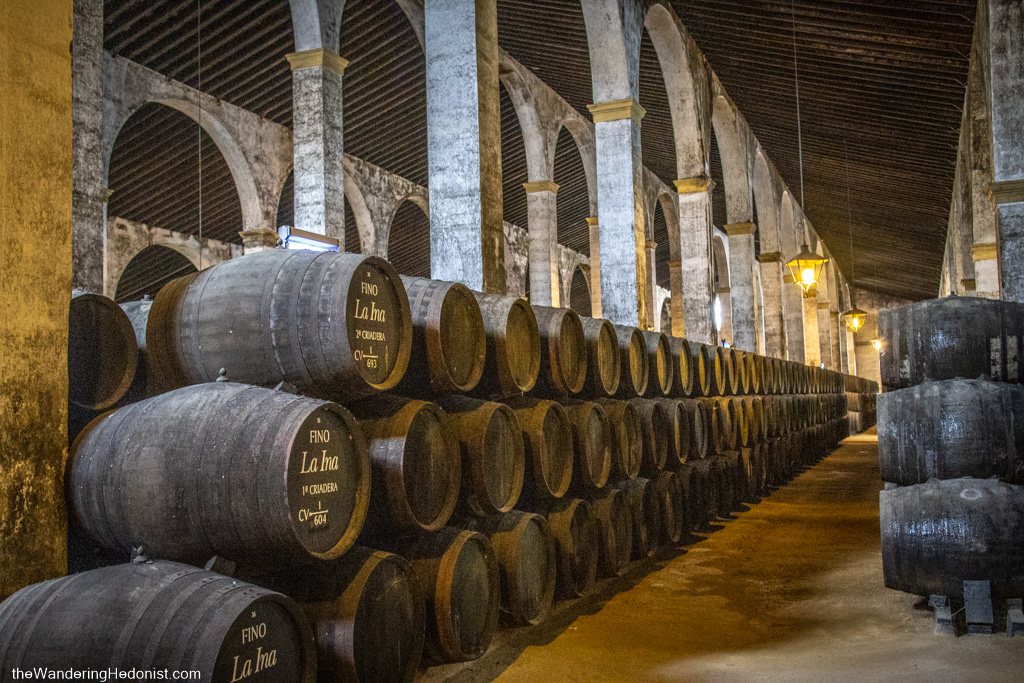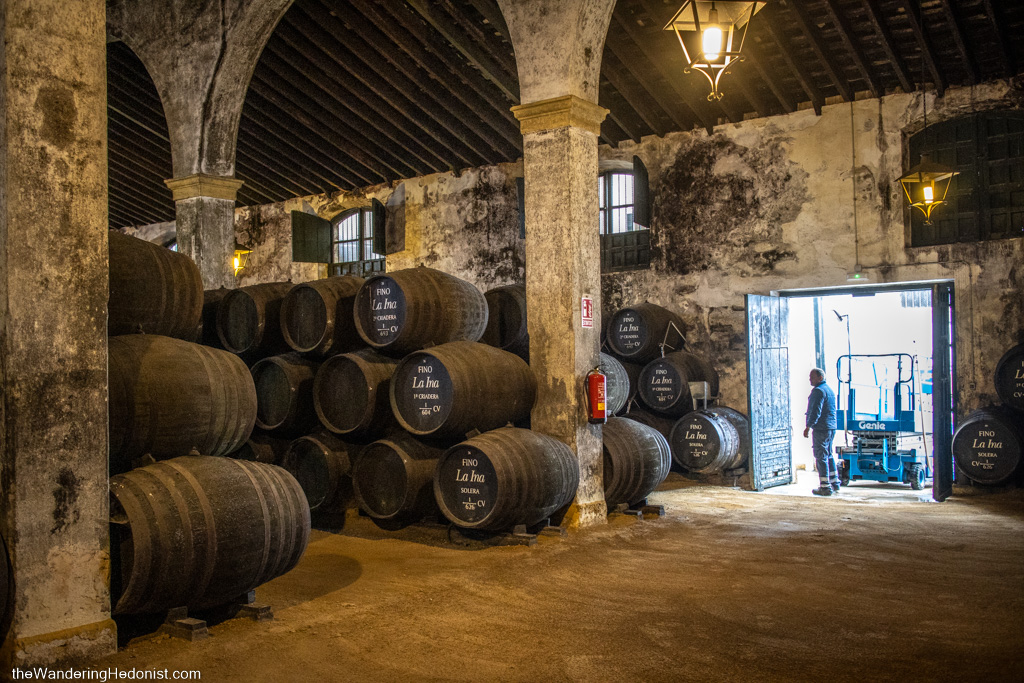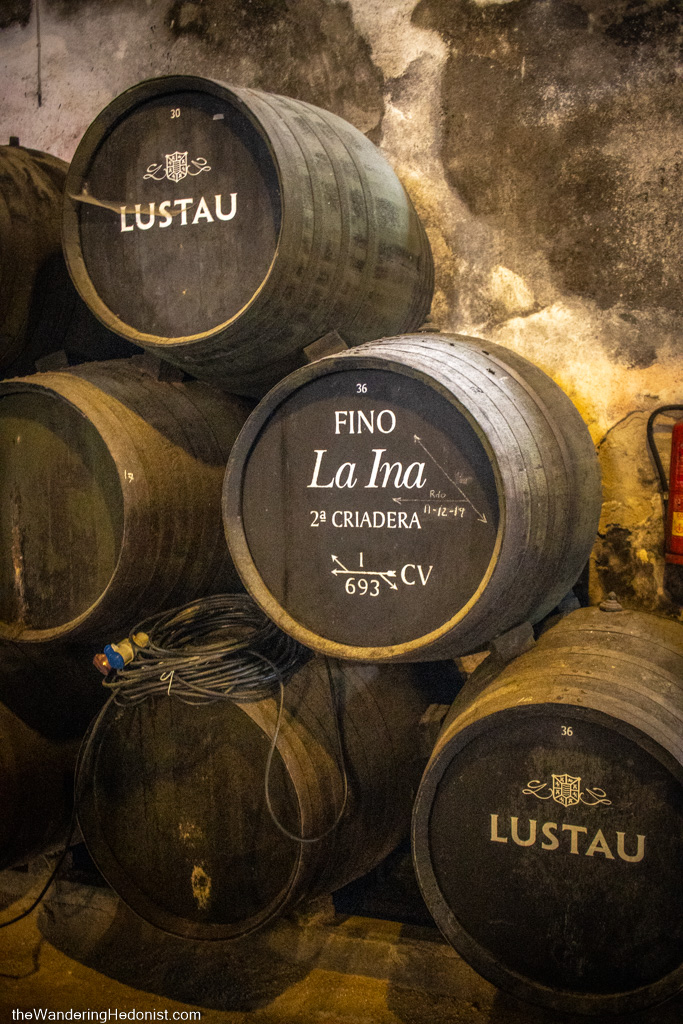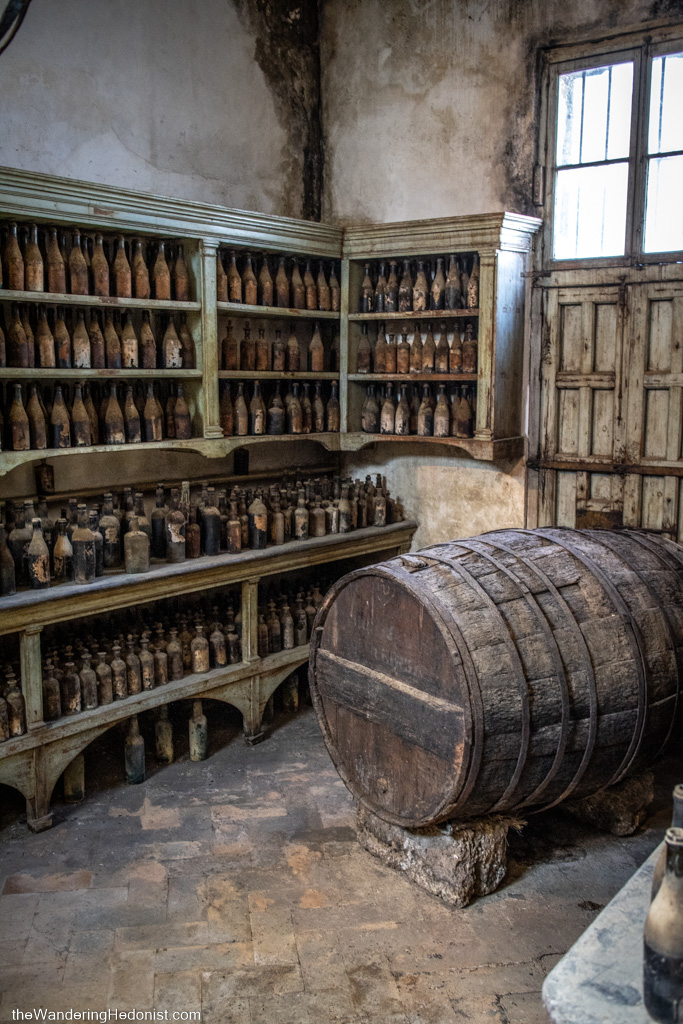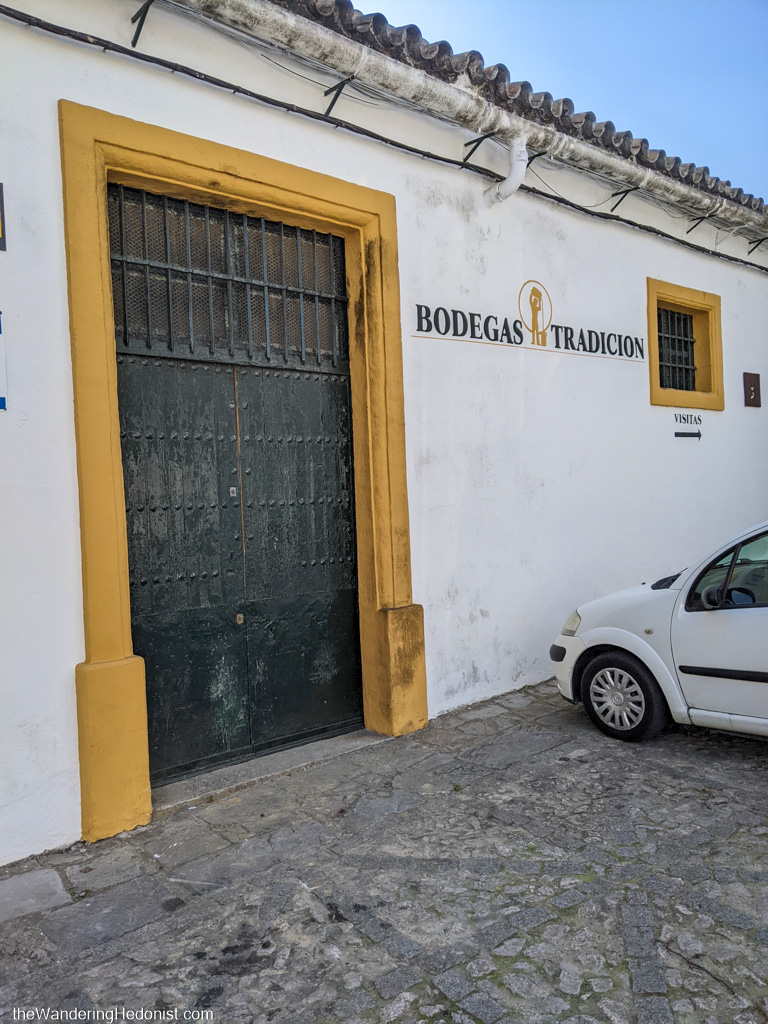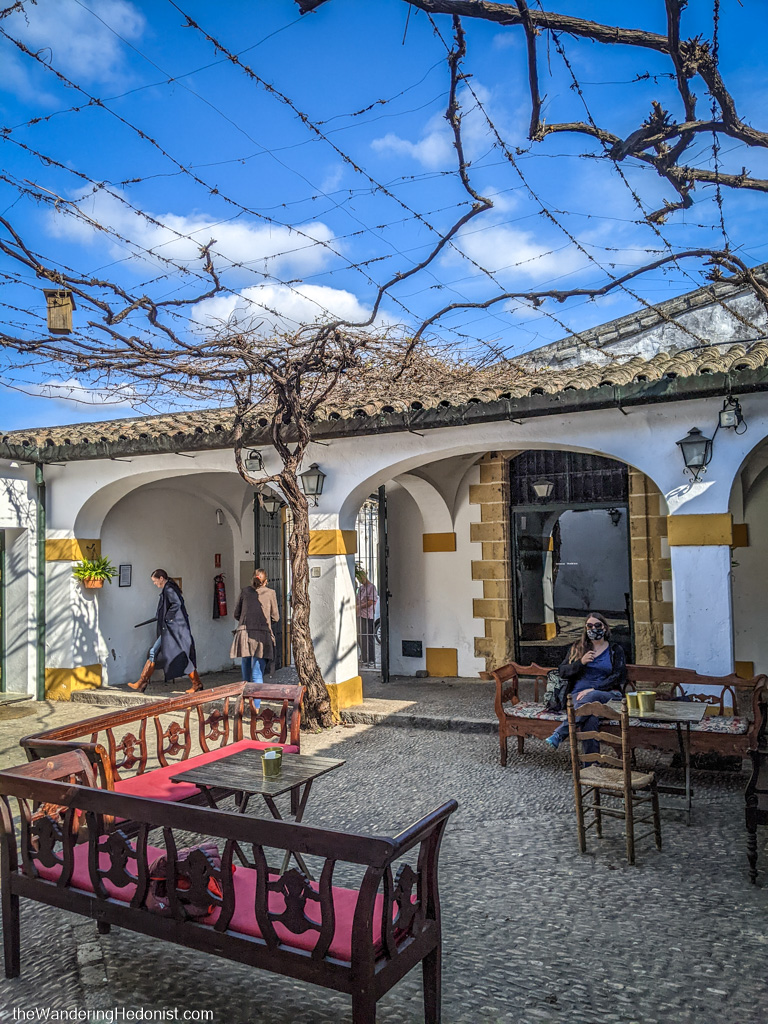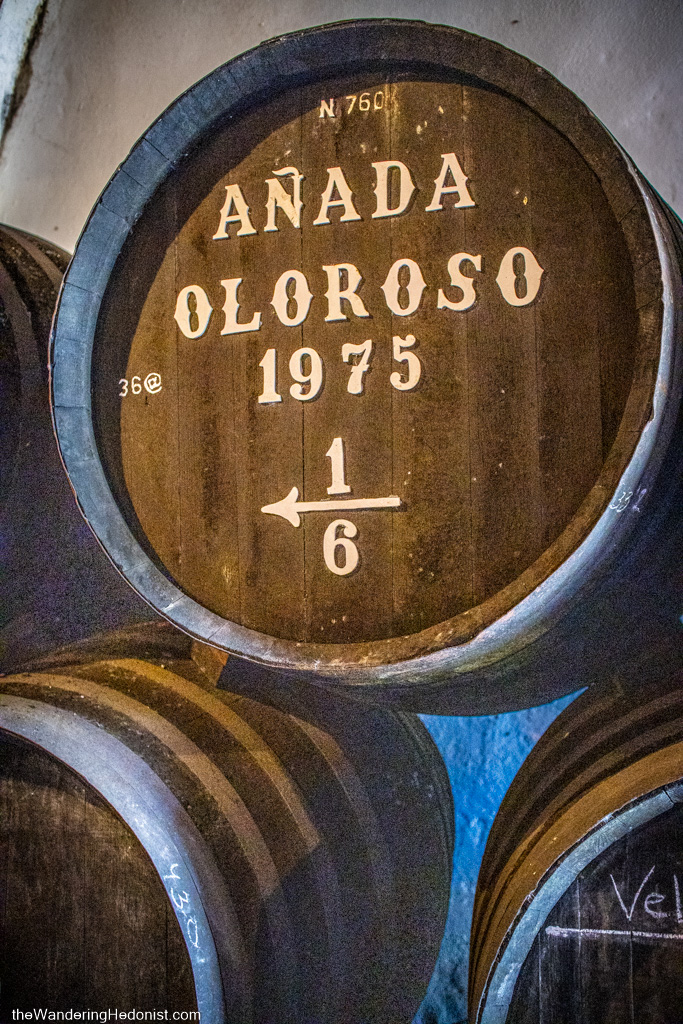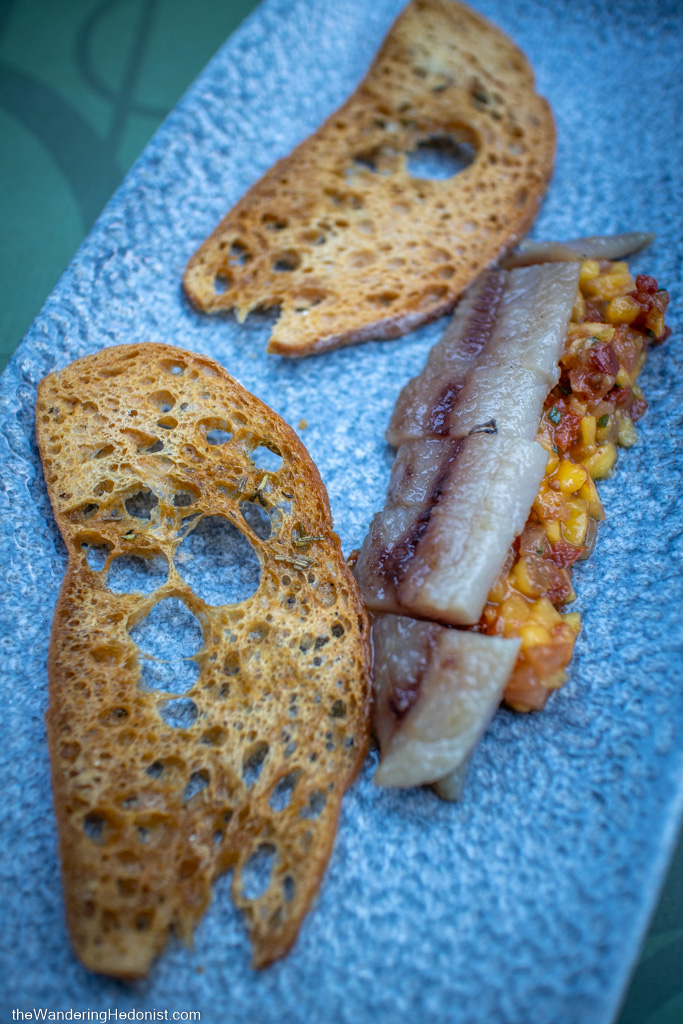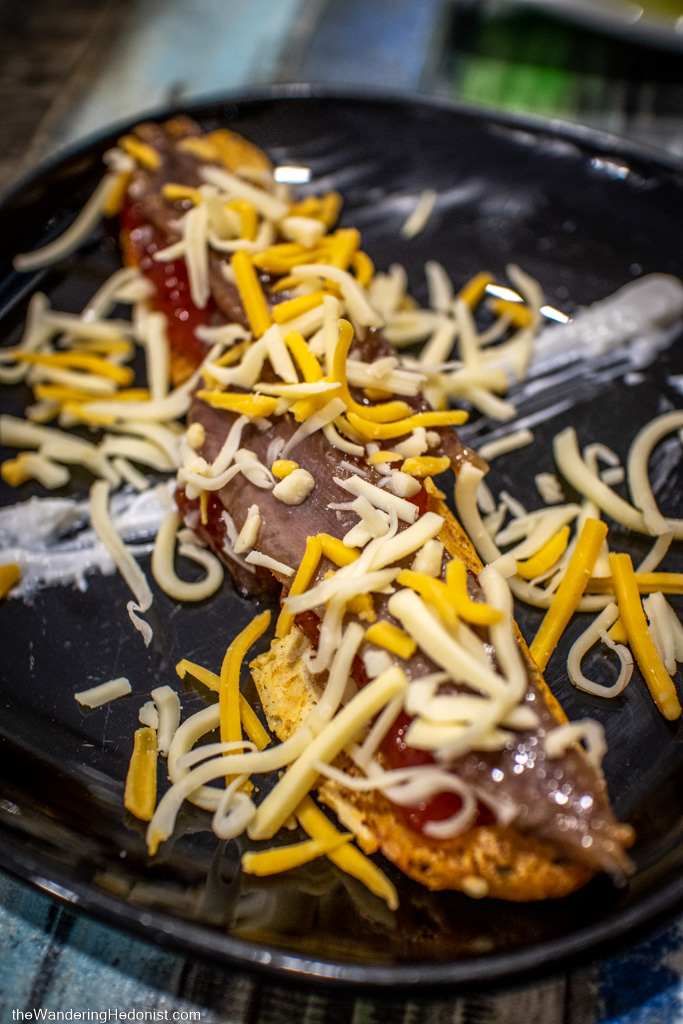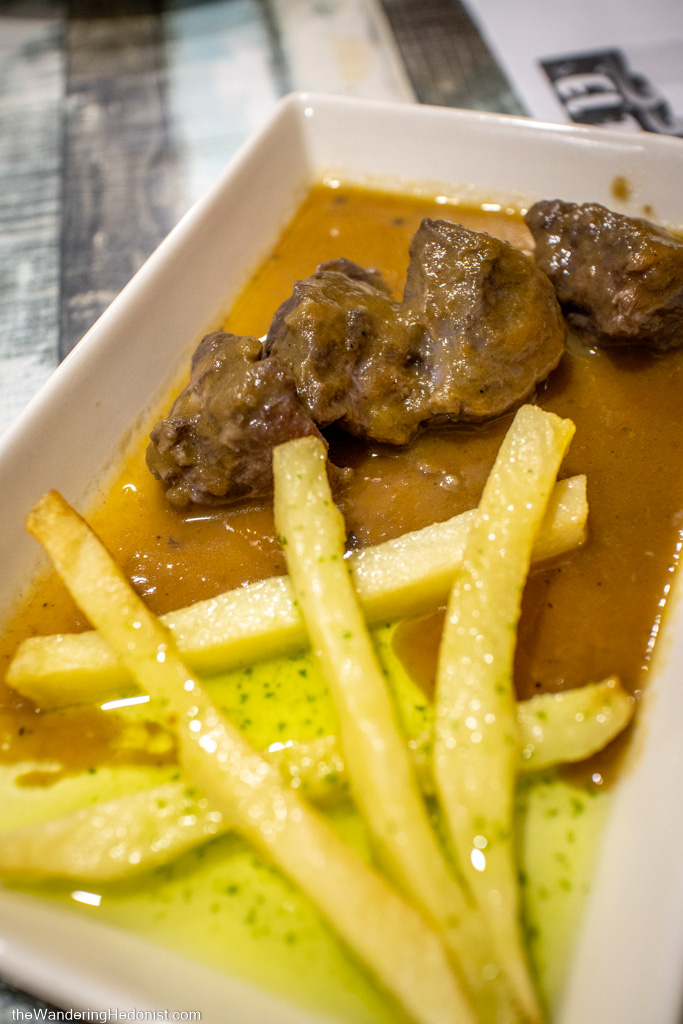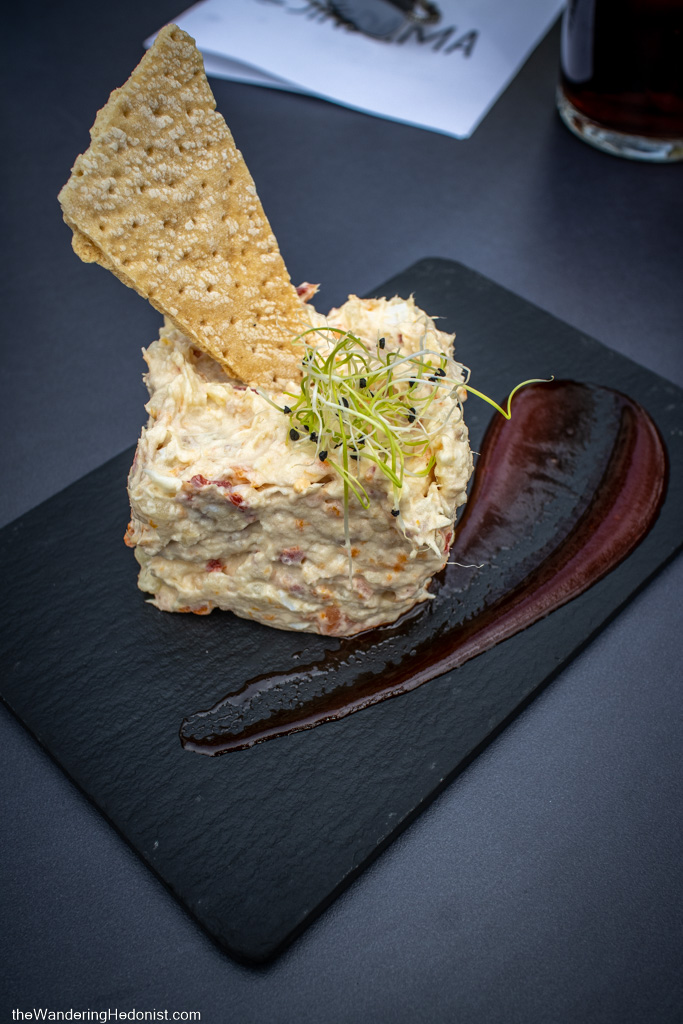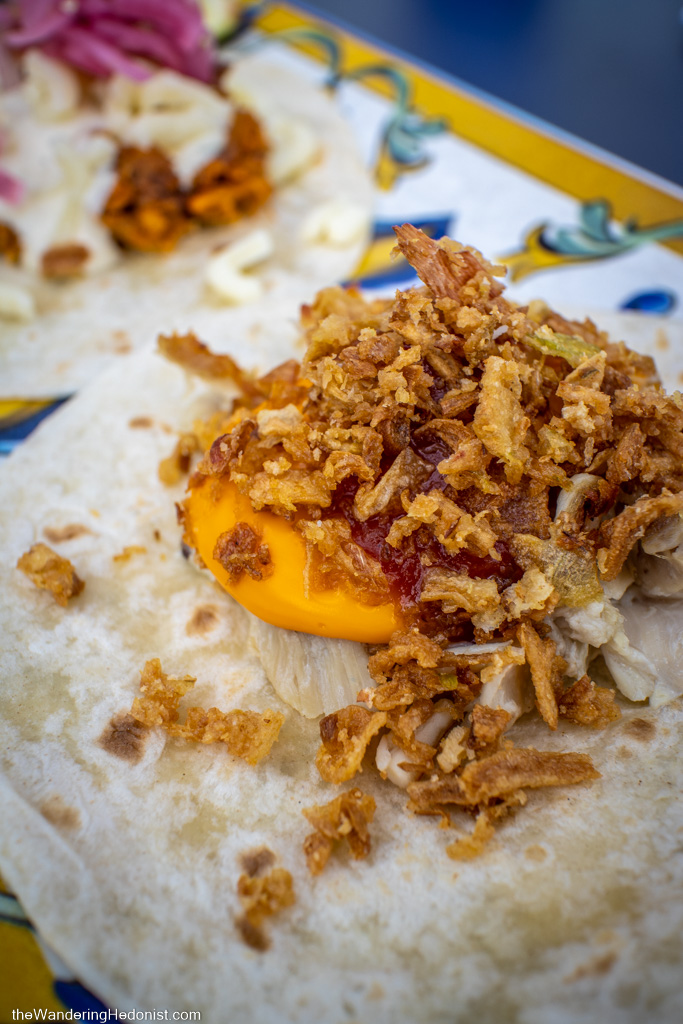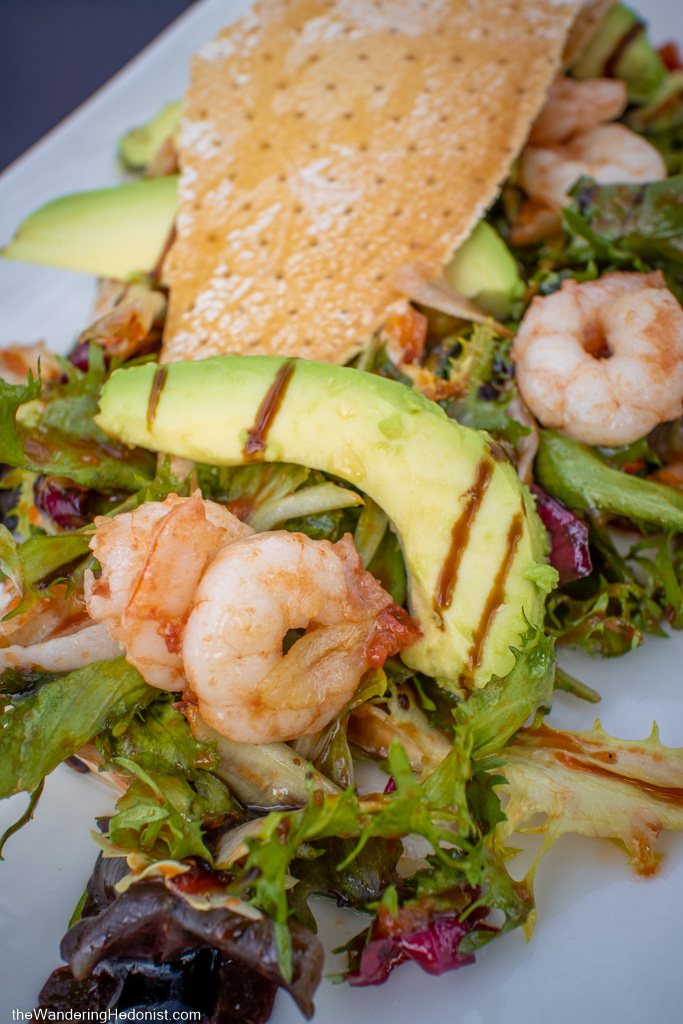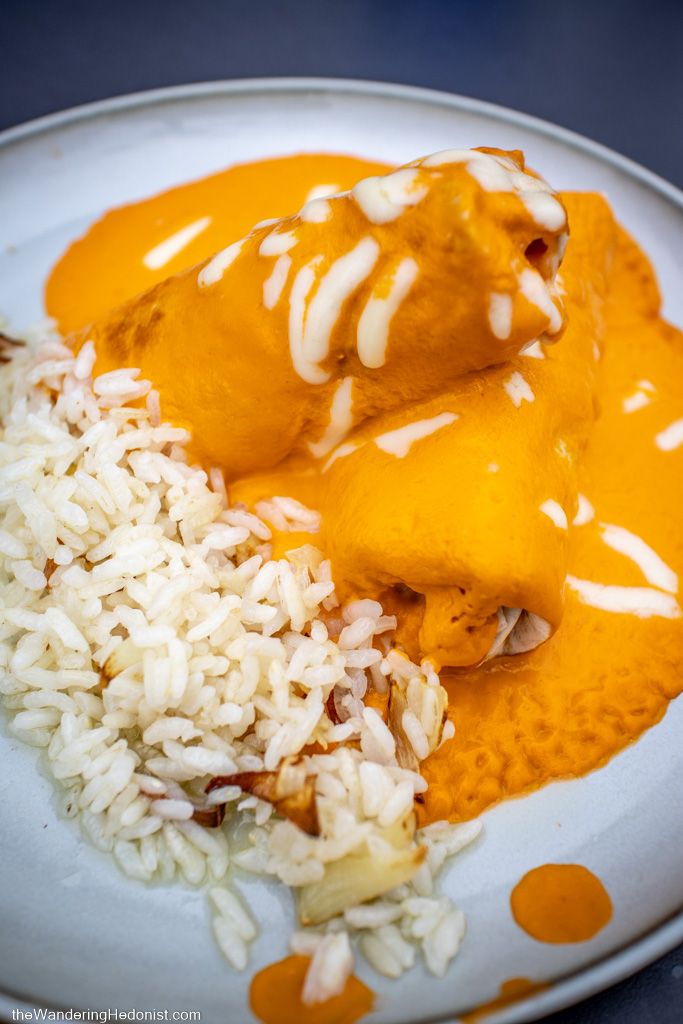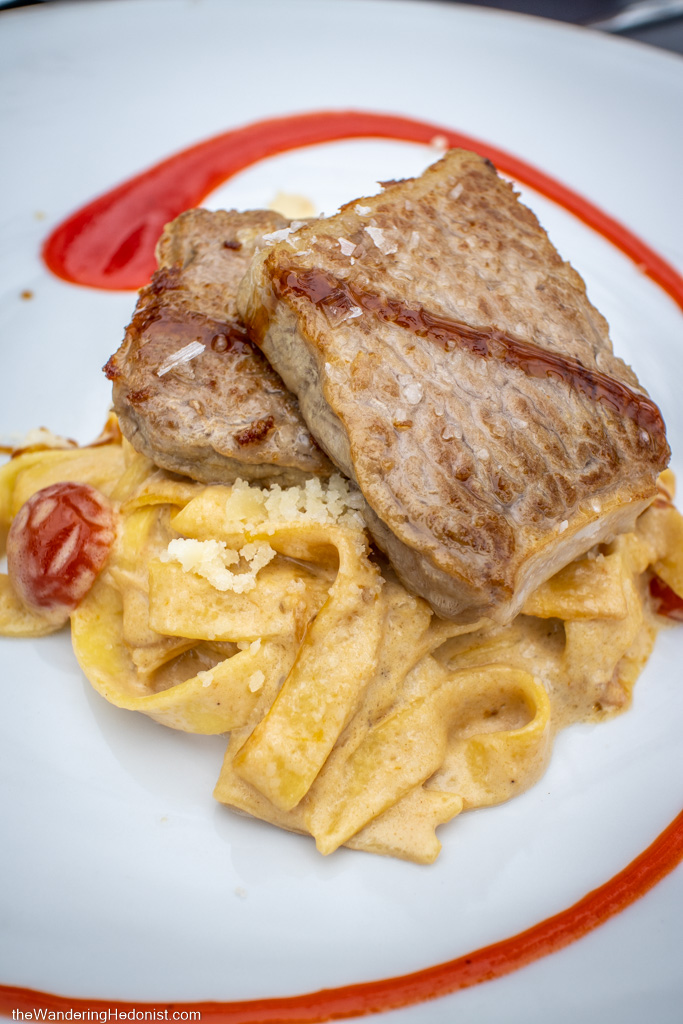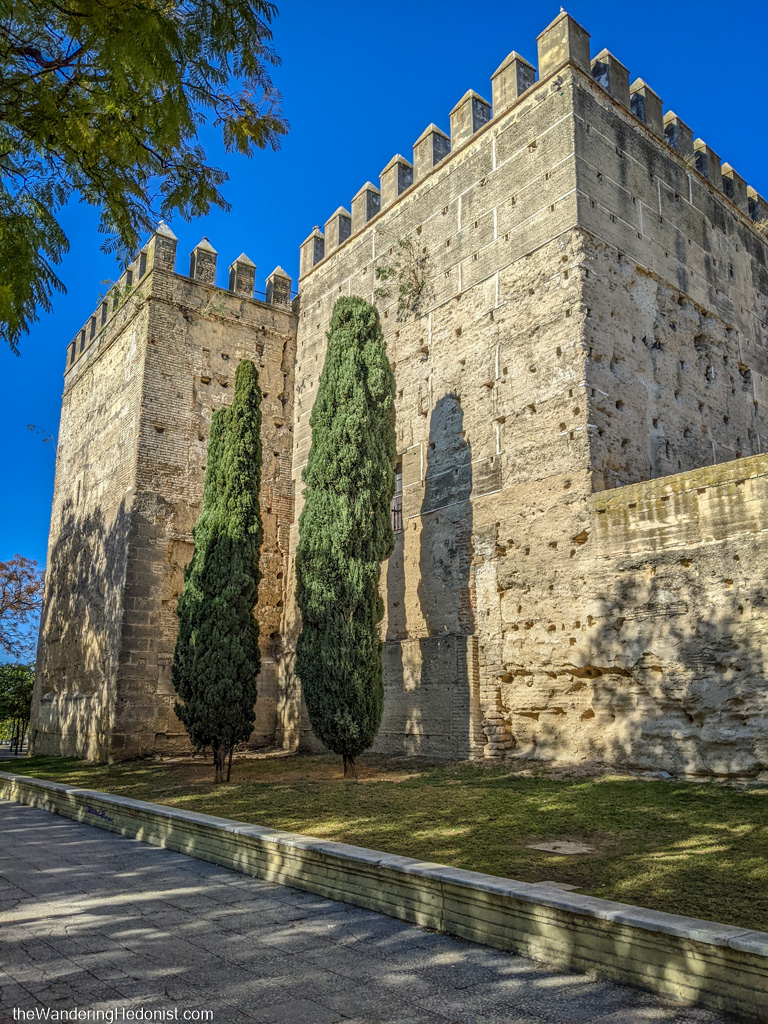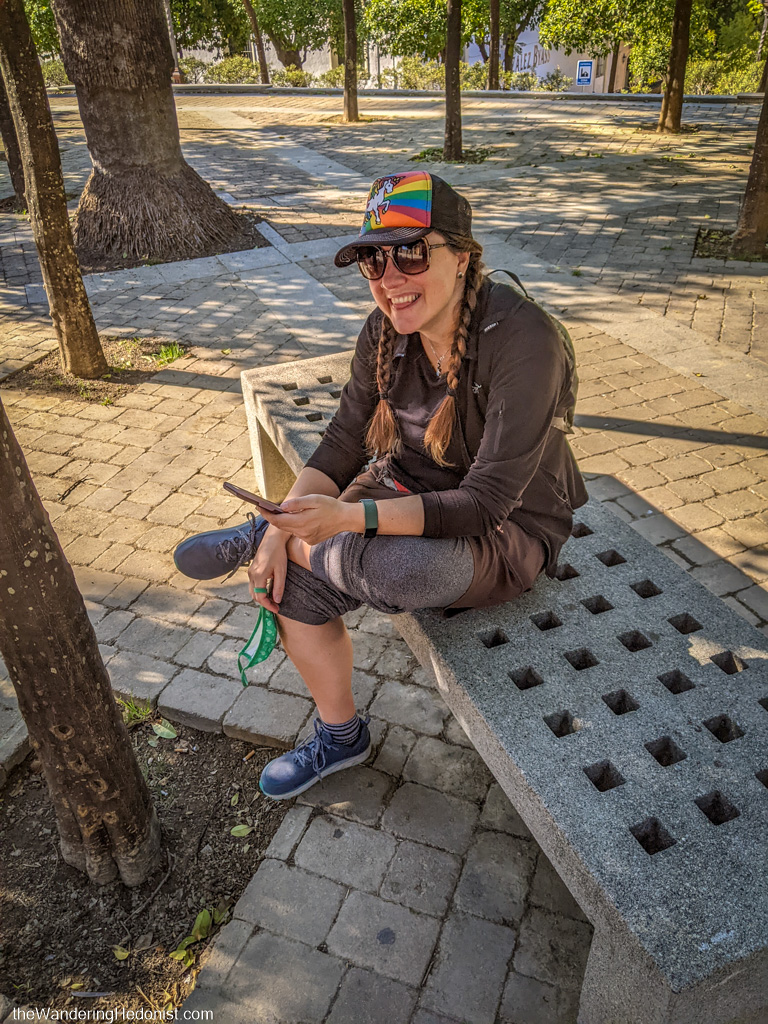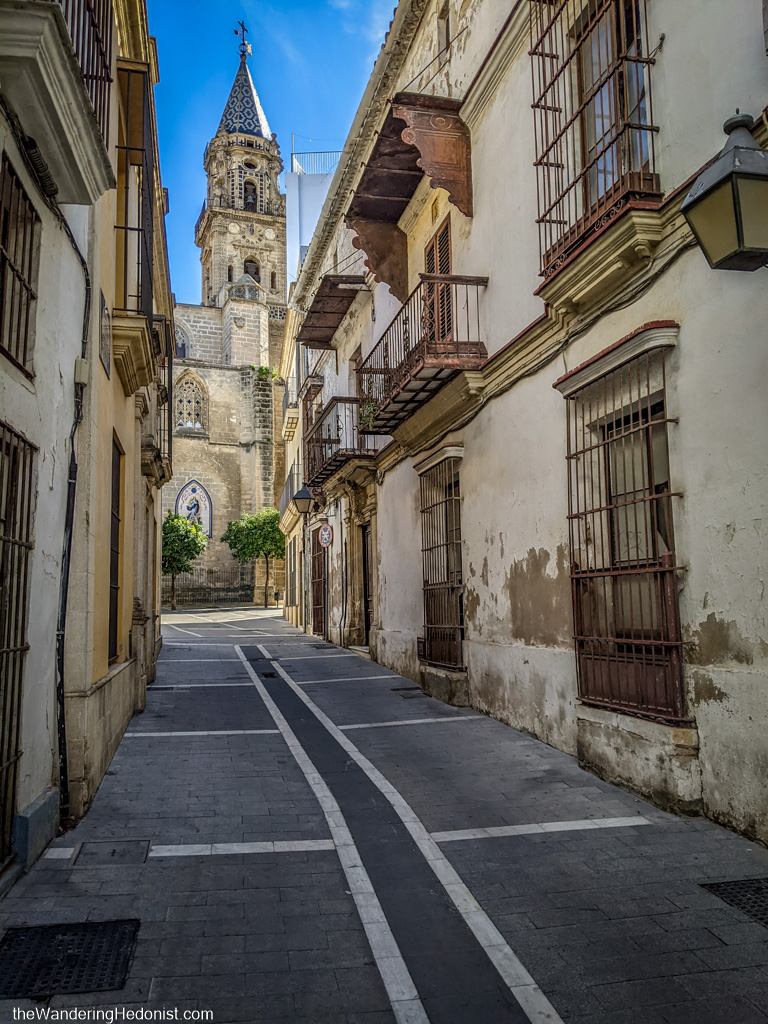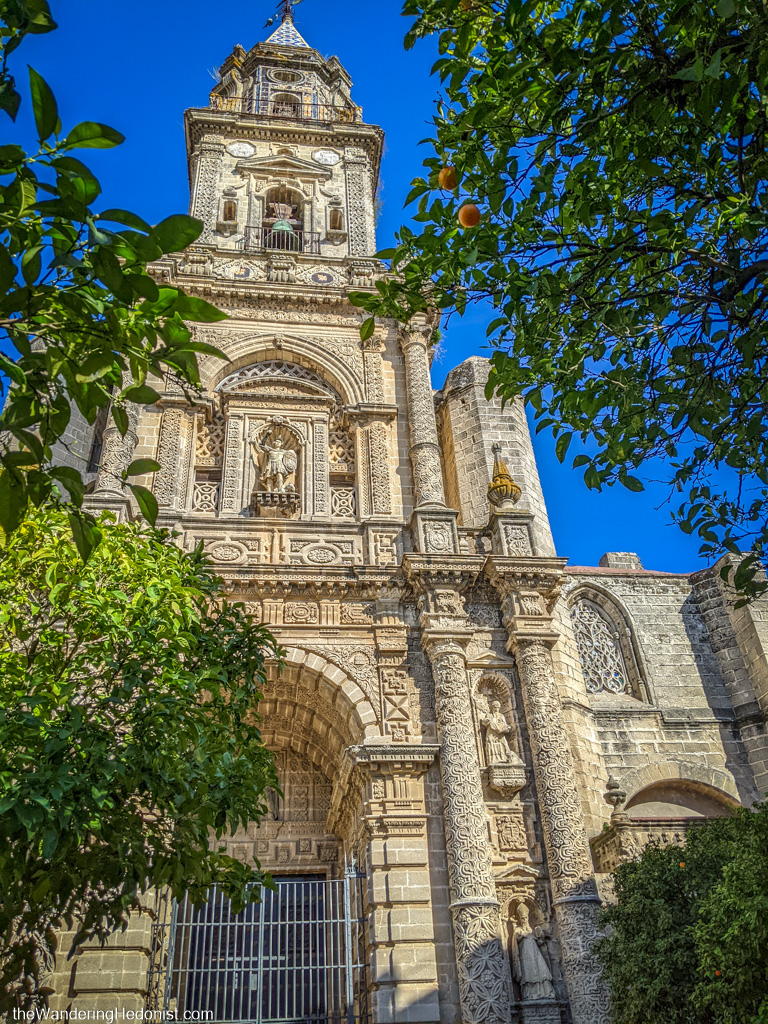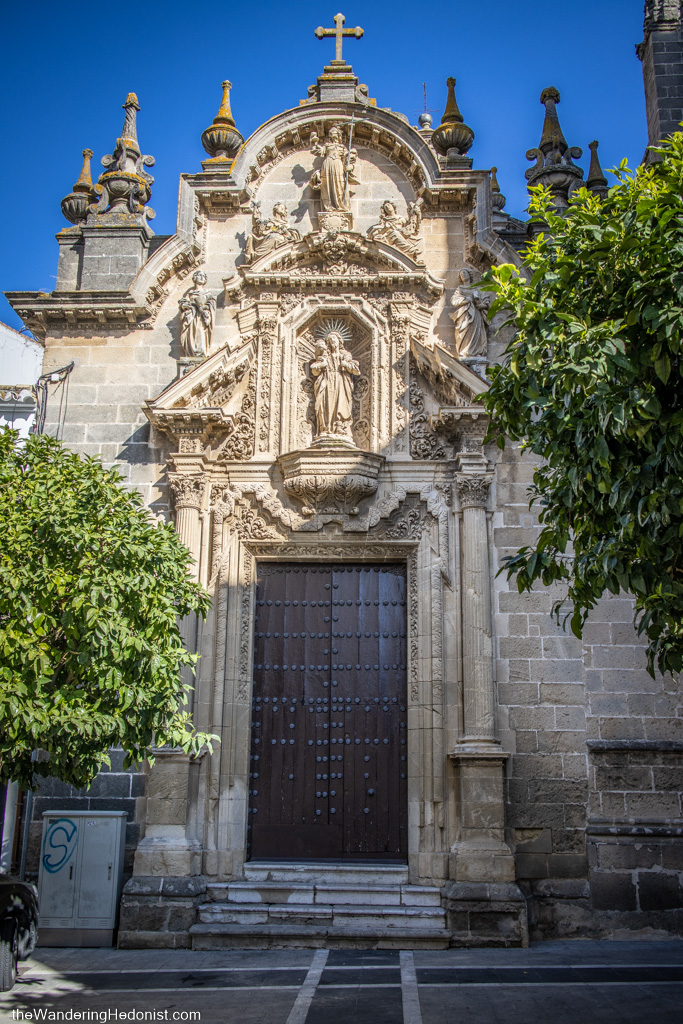Jerez de la Frontera is a town of just over 200 thousand best known as the production capitol of sherry wines. Here along with the two coastal towns of El Puerto de Santa María and Sanlúcar de Barrameda (until very recently the only three towns where sherry could be legally produced) form a triangle of the official sherry producing regions of Spain. After 3 weeks in Seville, Jerez was noticeably more working class and the tourism has yet to bounce back like it has in other cities. There’s a lot of charm in the narrow pedestrian streets in the center of town and you’ll most likely be dining with locals more than visitors. All of the major producers of sherry have their aging houses here so expect to be drinking a lot of sherry wine. If you’re not familiar with this beverage, I suggest getting acquainted. Real sherry is quite dry and bares no resemblance to the Bristol Cream you’ll find in the dessert wine section of your local wine store in the states. If you’re curious about the specifics, I’ve summarized everything I know about sherry in this article.
Walking around town
The orange tree lined winding narrow lanes across town and crumbling palatial facades suggest a once bustling and prosperous city but now seems to yawn with casual indifference, a veneer of disrepair. The city is clean and the parks well maintained, but there’s clearly a certain level of wealth that no longer dominates the daily goings-on of life on the street. Only a few blocks outside of the center of town you’ll find humble working class areas with regular people living their lives. And though perhaps there are still signs of a once busy tourist centric economy, the thrust of accommodating visitors, to me at least, feels secondary to the regular urban pursuits of its inhabitants. Which in all equates to a much more authentic experience of a small Spanish town than most of the others I have visited. I found it easy to fall into the relaxed rhythms of the Andalusian lifestyle, sipping sherry in a small but friendly tabanco with no particular place to rush off to.
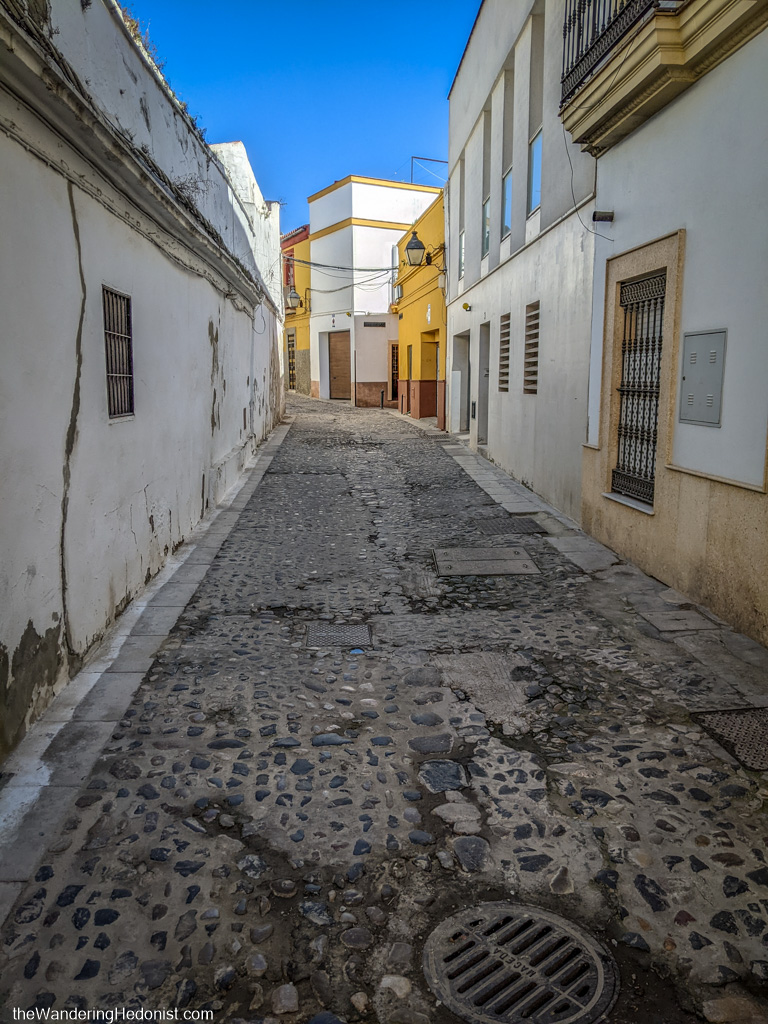
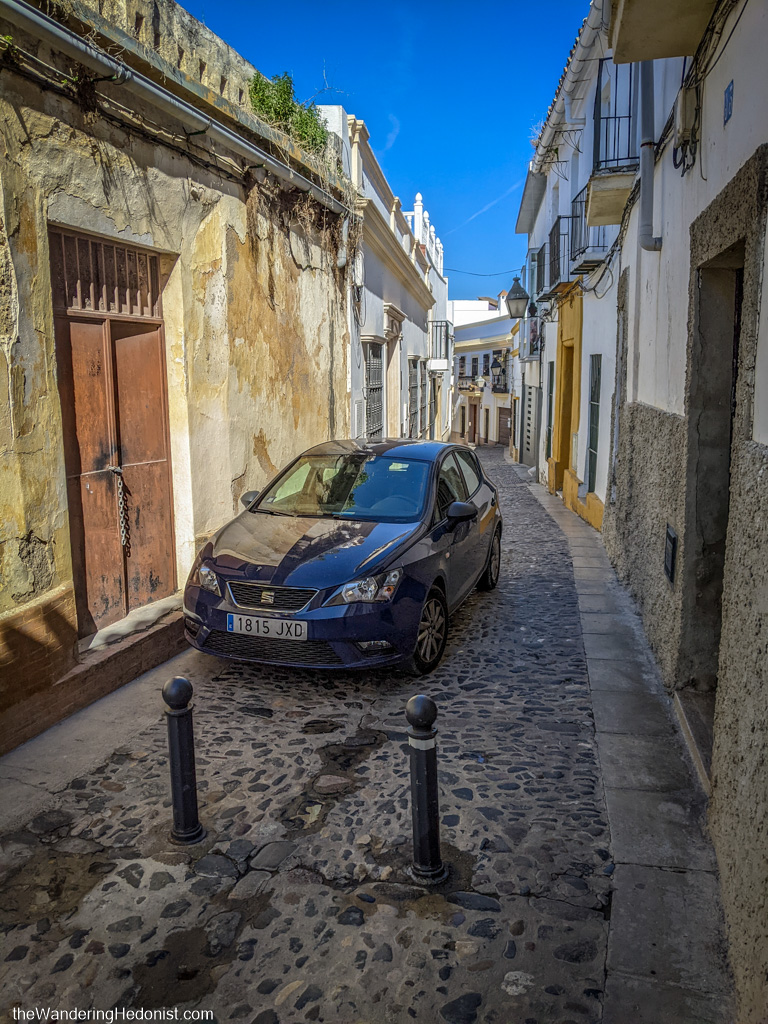
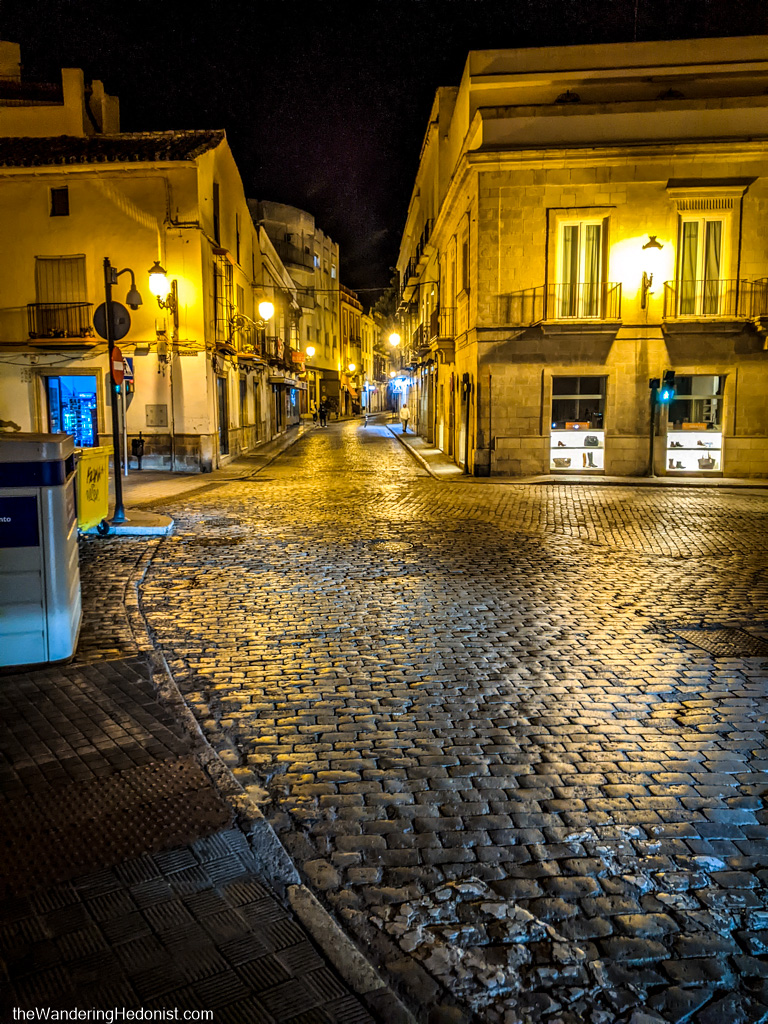

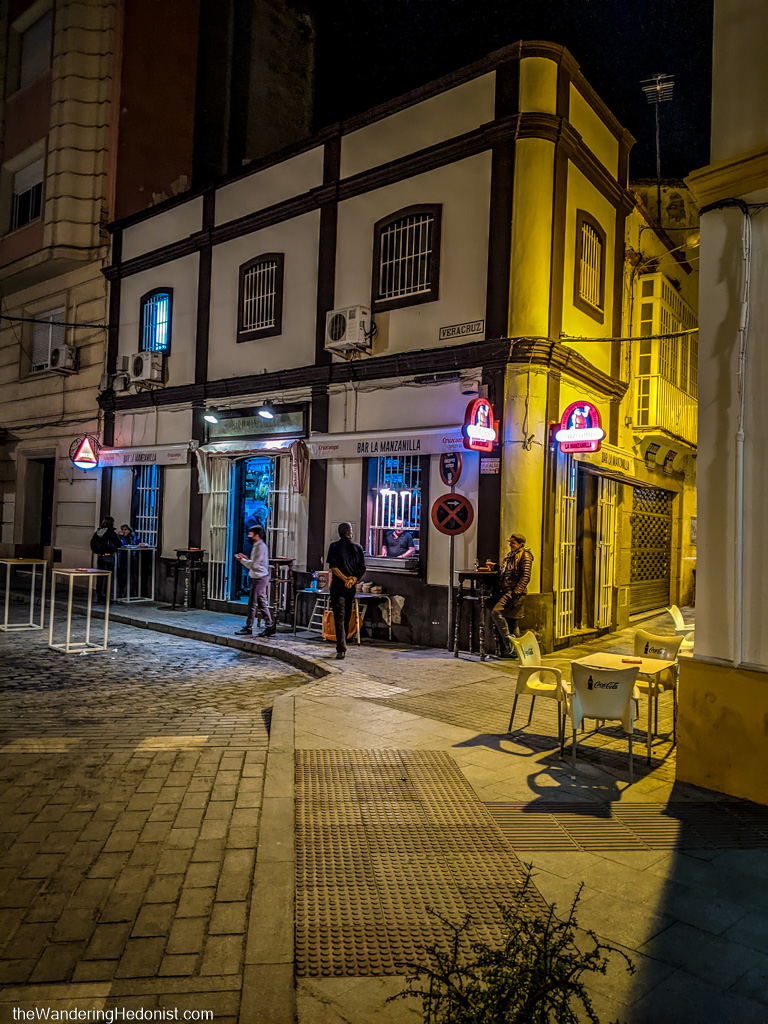
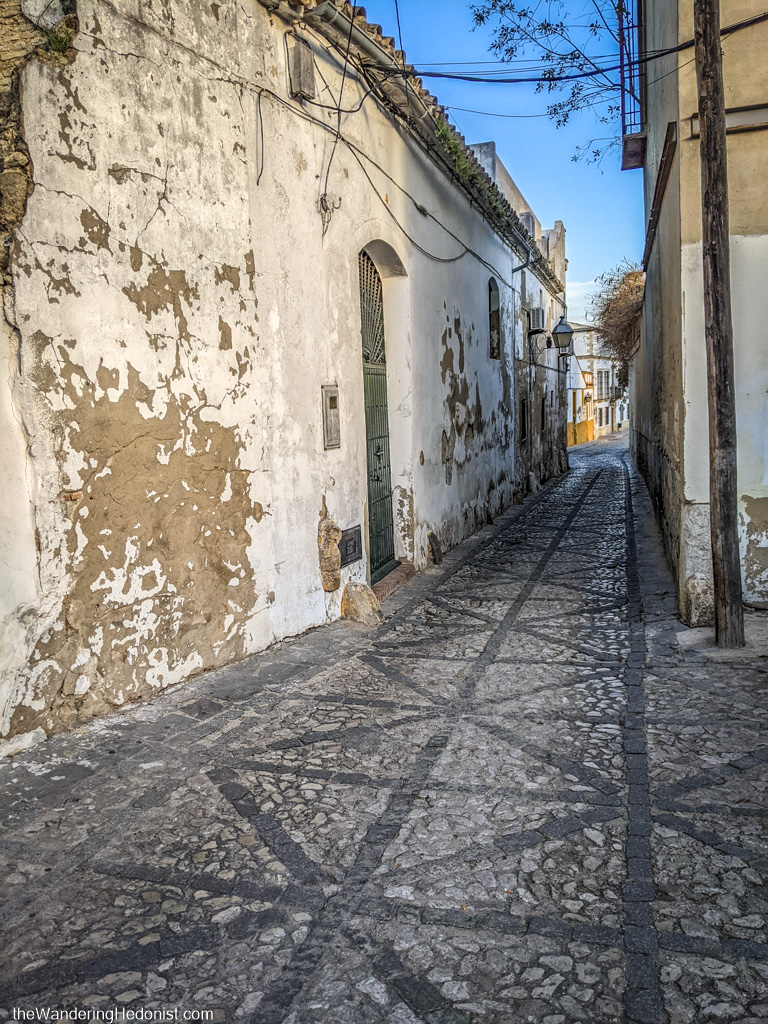



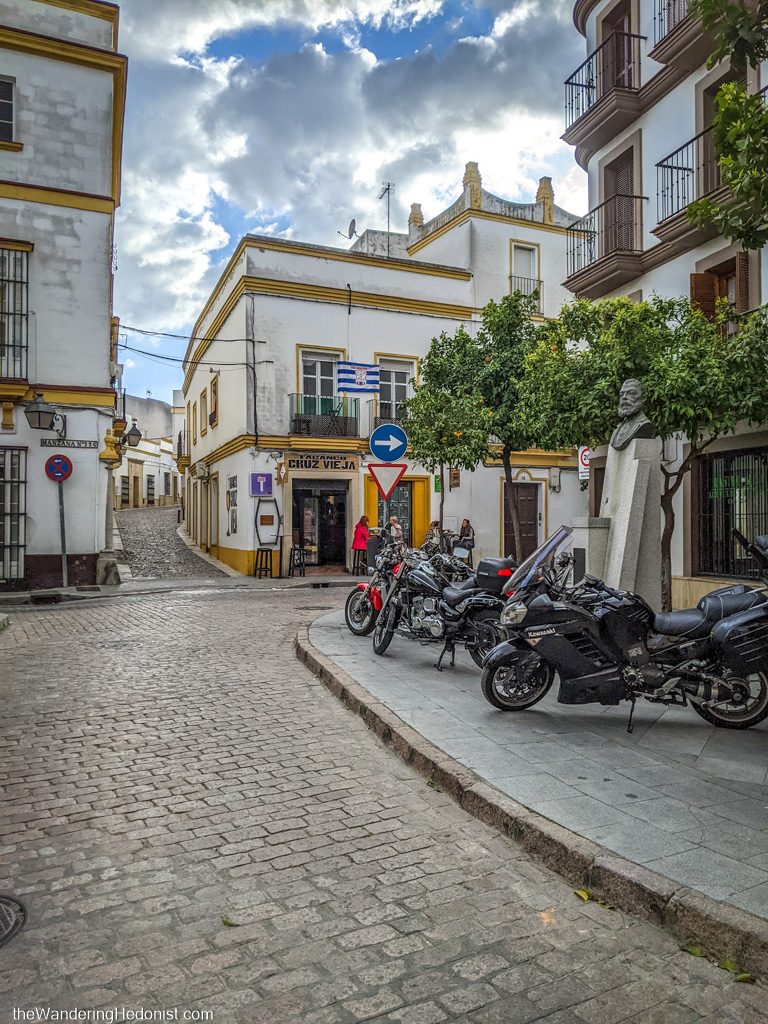

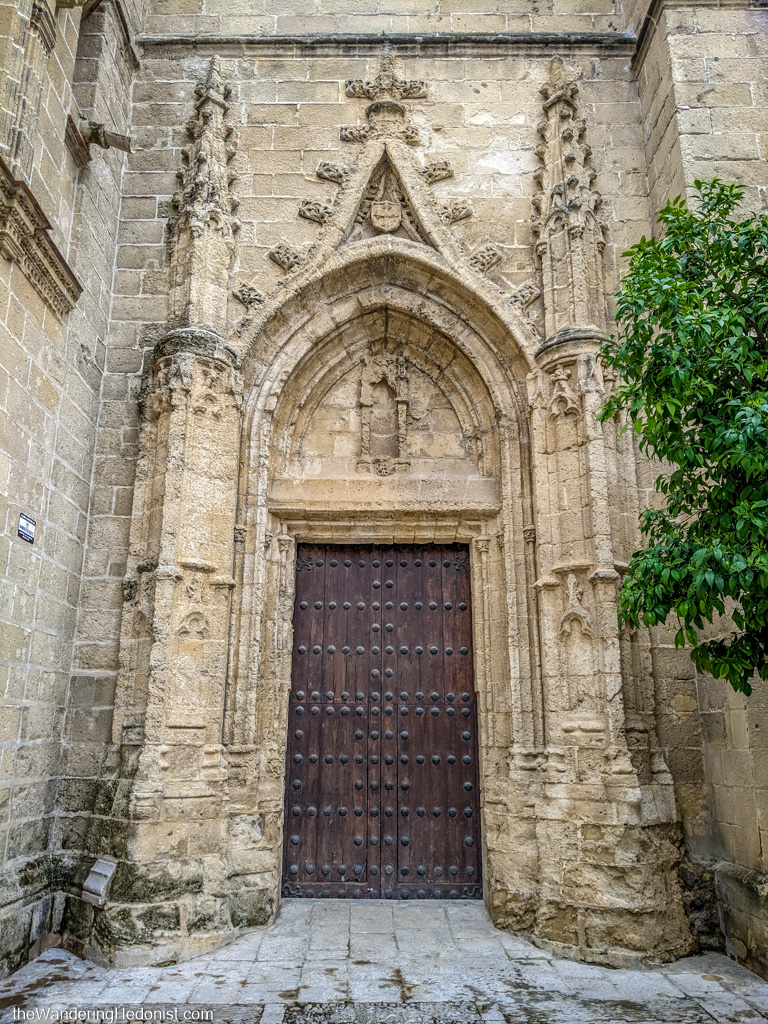

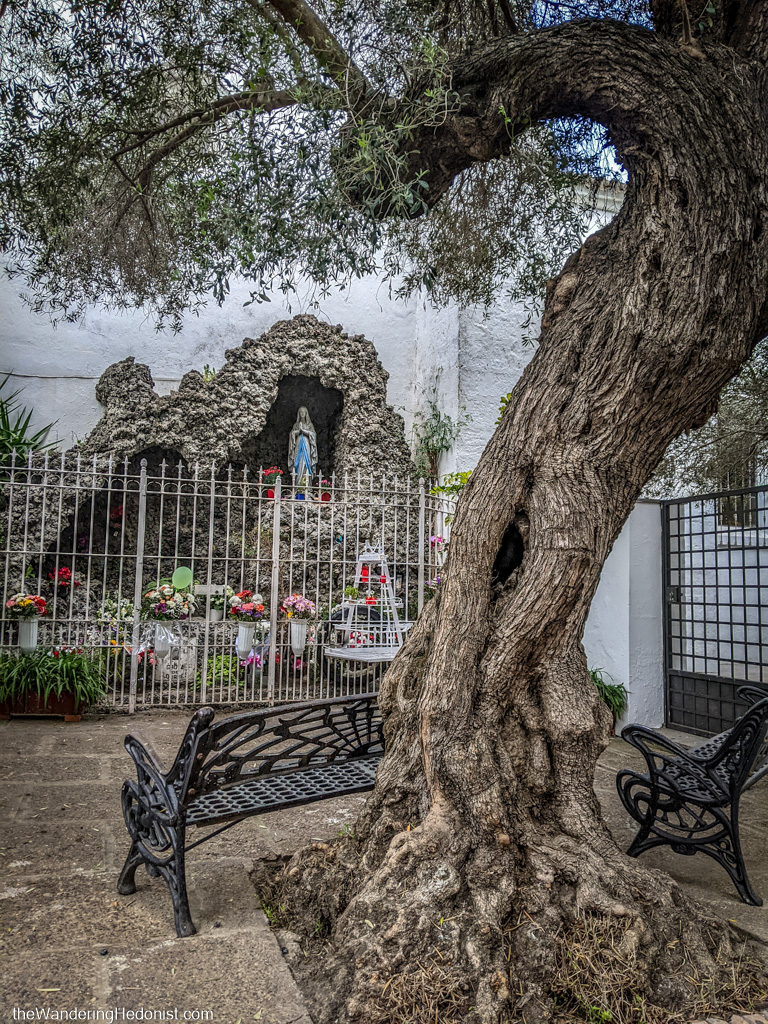

An introduction to sherry wine
More than you ever wanted to know about sherry. Feel free to skip if your interest is only casual.
Sherry wine is a regional wine that is unique both in the climate and soil and also in the production method which uses solera casking. The name “sherry” is actually a derivative of the ancient name for the city of Jerez which before the Reconquista was the Arabic شريش /Sherīsh/. So sherry is wine from the region of Jerez much like other regional monikers like Champagne.
The main grape produced in this region is a dry white grape called palomino. From this one grape 5 wine varieties are produced: Fino, Manzanilla, Oloroso, Amontillado, and Palo Cortado. A second sweeter white grape called pedro ximénez is also produced which is sun dried into raisins and then made into a sweet desert sherry of the same name or PX for short. Additional sherry varieties were created for British export that combined both a palomino and PX grape to sweeten the very dry traditional sherries for English palettes. Although our guide in the La Gitana winery was adamant that only palomino wines were true sherry wines. Interesting to note that all sherry wines are white wines even though some may appear quite dark and viscous.
Sherry wines are produced in a method called “solera” where rows of barrels are stacked on top of the other 3 or 4 rows tall. New wines are introduced in the top barrels, aged, then moved down to the next lower barrels over a period of several years. The bottom row of barrels is called the solera, related to the floor of the winery. These barrels are only transferred a third of a barrel at a time so that each harvest mixes with previous harvests at every stage of barreling, creating a very consistent end product. It also means that there are no vintage or age statements on sherry wine because the years are all mixed. Although where say a fino wine is typically aged four years, some barrels of exceptional quality are set aside and left to age much longer. When such a barrel is aged for 20+ years it can be designated as Vinum Optimum Signatum or roughly Very Old Sherry (VOS) and for 30+ years as Vinum Optimum Rare Signatum or roughly Very Old Rare Sherry (VORS). Less than 1% of sherry produced is VOS/VORS.
In addition to aging, the location of aging plays a major role the in the final flavor of the wines. Aging in Jerez produces a certain flavor, where aging near the sea in El Puerto de Santa María imparts more salt and sea notes and aging in Sanlúcar de Barrameda provides a more floral body with milder sea profile. Aging barrels are kept only loosely sealed to provide access to the natural wild yeasts and environment.
Aging houses are also all built in a particular direction to allow precise control over the different cool and dry winds of the region and the sand on the floors allows them to be watered for additional cooling.
All sherry wines are considered “traveler wines” and are slightly fortified with wine spirits to extend their life on sea voyages. But the amount of fortification is slightly different depending on the wine variety. There are two primary methods of sherry production.
The first is a biological process. After the initial wine is produced it is fortified to 15% and allowed access to the natural wild yeast in the air which grows and forms a barrier between the wine and the air in the cask preventing oxidation. These wines remain light in color and fresher tasting while the yeast activity creates a very dry wine with tart and nutty notes. These are the fino wines. Fino produced/aged in Sanlúcar de Barrameda has a distinct chamomile herbal bouquet and is called manzanilla.
The second is an oxidation process. The initial wine is fortified to 17% which kills the wild yeast leaving the wine exposed to the air in the cask. This process through oxidation creates a much darker wine with less tart notes and more woody flavor. These are the oloroso wines. Oloroso wines are also very dry.
The third type of wines use a combination of biological and oxidation aging where wines start off with a layer of wild yeast, then the yeast is removed, either from some environmental factor or by increasing the alcohol content, which creates a combination of the two flavors. The two varieties created this way are the amontillado and palo cortado, the distinction of which is still a bit fuzzy. After four tours and a few pointed questions, the answer is not definitive. The first is amontillado which is created intentionally by fortifying the wine to 17% half way through the initial aging with an equal amount of each process, though amontillados can then be aged for much longer. The second is palo cortado which is the most mysterious. As I understand it, originally these casks were not planned but discovered. At some point the yeast in a fino cask dies altering the flavor and the specific cask is set aside and left to age producing a unique variety of wine. However at Lustau the variety is now carefully and chemically produced so the mystery element is no longer a factor. As best as I can tell, palo cortados have a much shorter biological stage which pushes the flavor balance towards the oxidation side.
The pedro ximénez is produced by drying the PX grapes into raisins creating a very thick and sweet wine, fortified to 15% and aged in the same solera process. The flavor is very intense, very sweet, with overwhelming notes of raisin and molasses.
The combination of PX and palomino wines create medium and cream sherries, cream sherries being sweeter than medium with a heavier mix of PX. An example of a cream sherry is the ubiquitous Bristol Cream common in US wine stores. Sadly a cream sherry, which inexperienced drinkers associate most readily with sherry, is quite different in flavor and character than traditional Jerez sherries.
Lustau Winery
Probably the most common brand of sherry in the United States is Lustau. It’s high quality and affordable and probably my favorite sherry overall. They have an enormous operation with aging houses in all three sherry cities with VOS and VORS releases, specialty releases, and partnered releases with smaller vineyards as well their own line of brandies and vermouths (which are all very tasty). So this was probably highest on our list of places to visit. We took the tour of their flagship Jerez location and expansive aging houses. A very good experience.
Gonzalez Byass Winery
Gonzalez Byass is larger than Lustau internationally but not as common in the United States, so we were excited to explore this winery and try what they had to offer. Their main houses are right beside the cathedral and castle in the center of town so it’s hard to miss. We booked a private tour with their ultimate tasting which was fantastic. It was a little odd to have a solo tour, there’s no one to hide behind, so the experience was a bit intense. Our guide was very serious about their product and had strong opinions and was very knowledgeable. After touring the older facilities which included the original barrels the founder purchased to start the winery and his office with ancient looking tasting samples, we moved to the more modern storage facility which featured an enormous concrete dome and bunker type building that had several rooms built into the middle which were for tastings and functions. We had a private room with 10 different bottles to try, their full basic line along with their VOR/VORS line which was exceptional. This is where I discovered my favorite overall sherry, the Apostles VORS, a medium sherry of 30+ years, a blend of palo cortado and PX. Katy later purchased a bottle in the store and we enjoyed sipping it for the remainder of the trip.

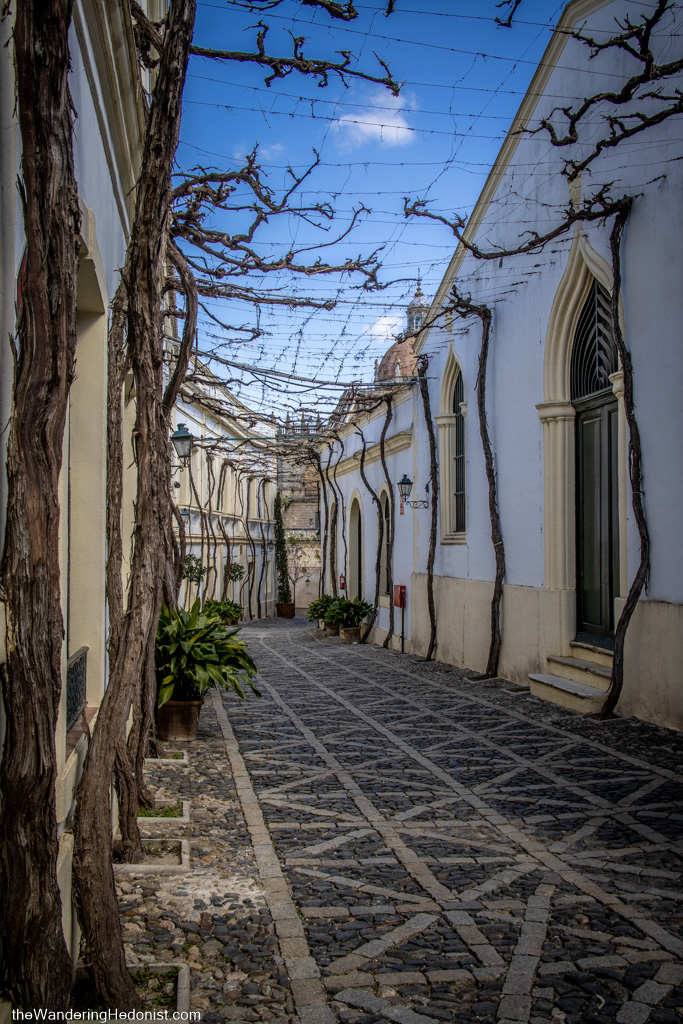
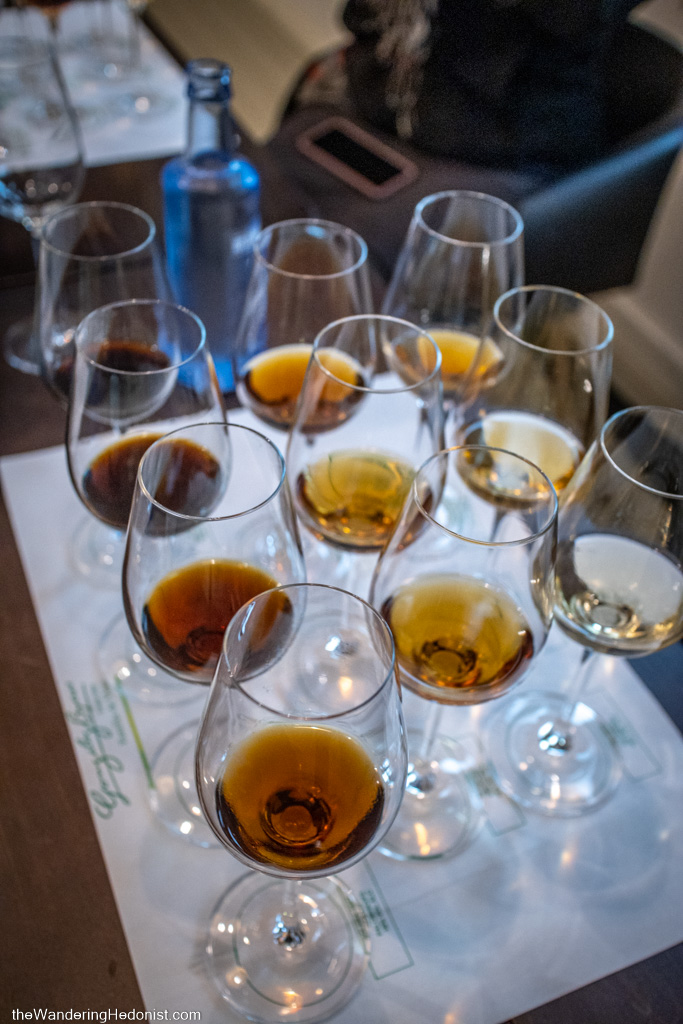
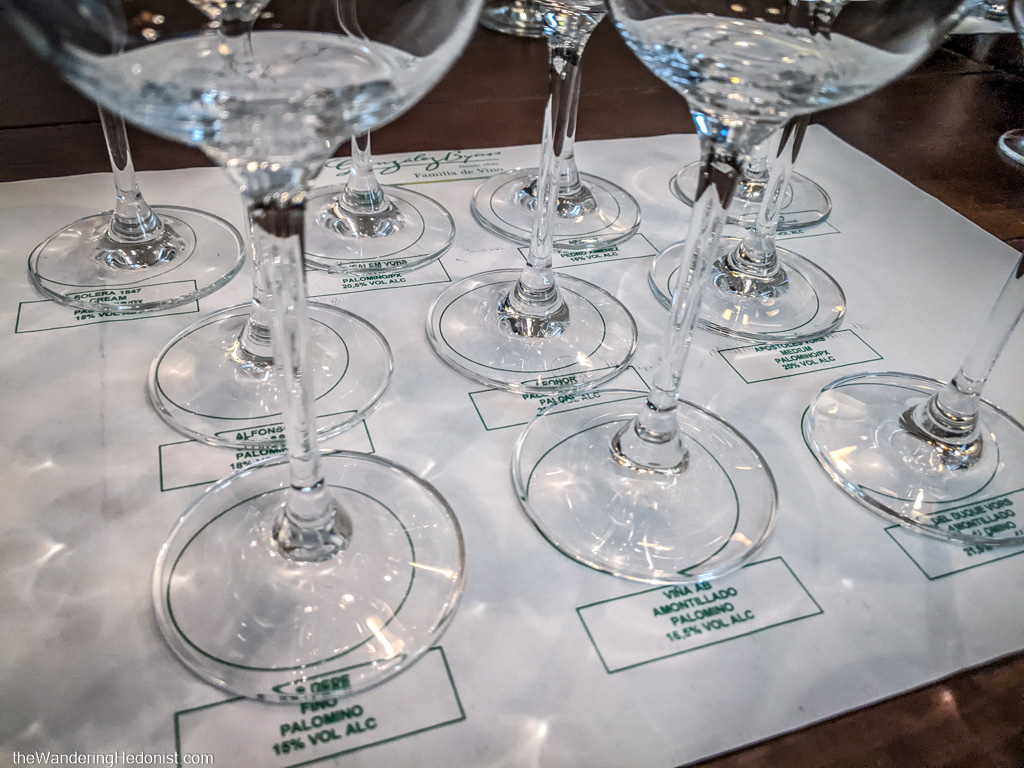
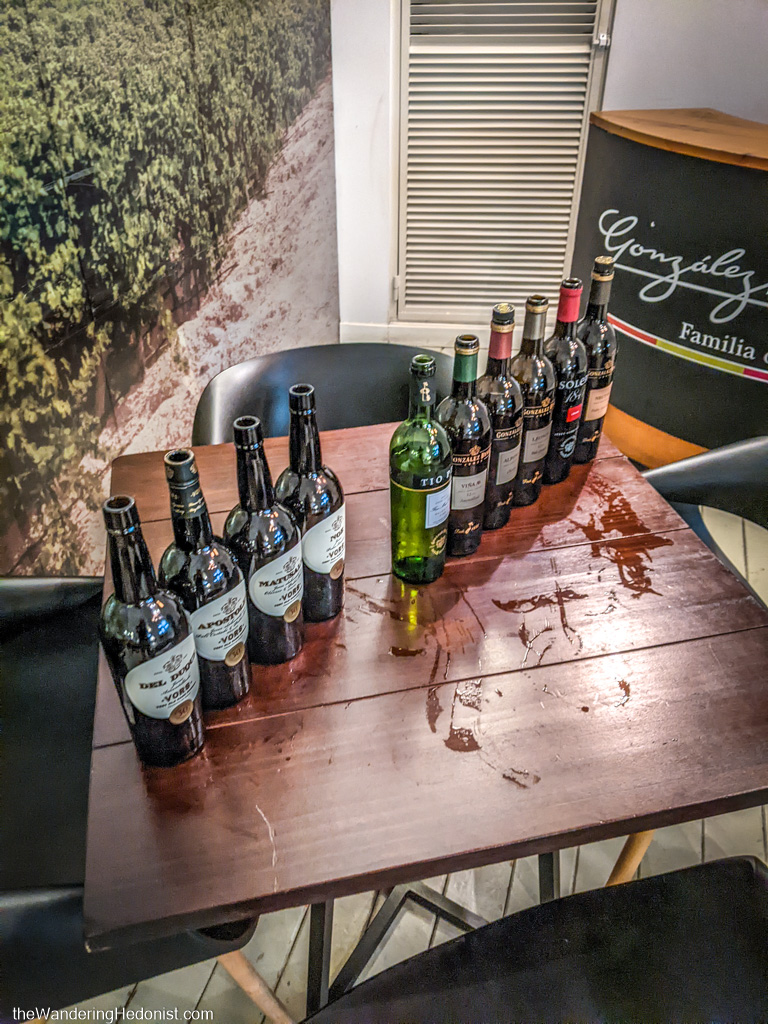
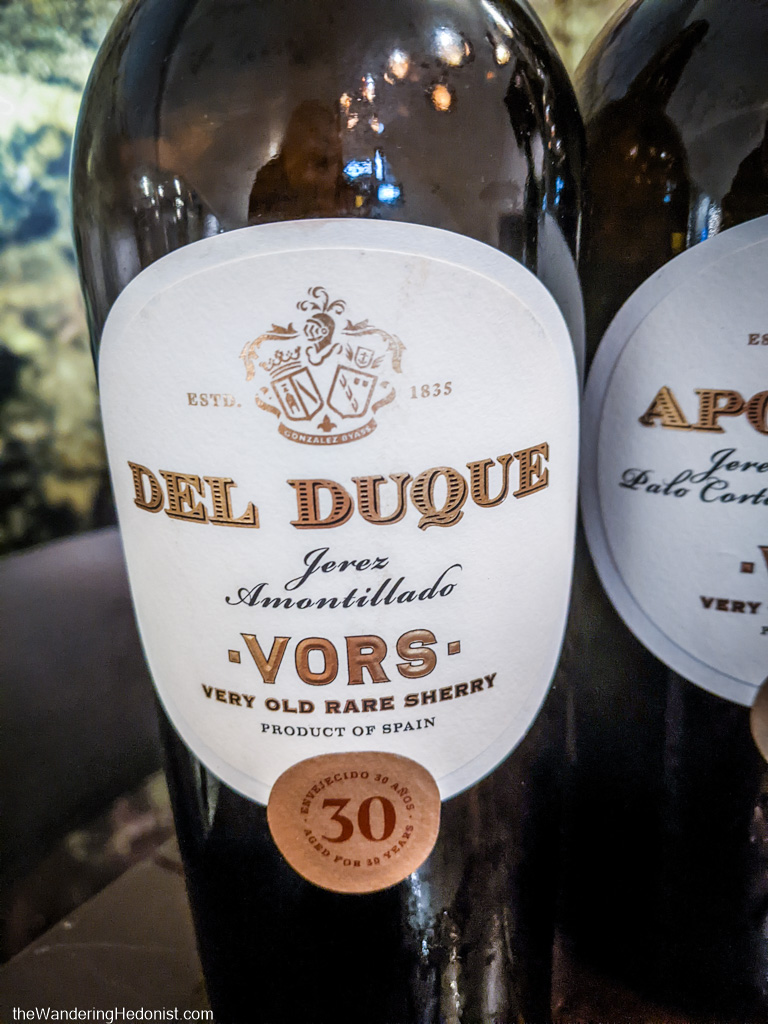
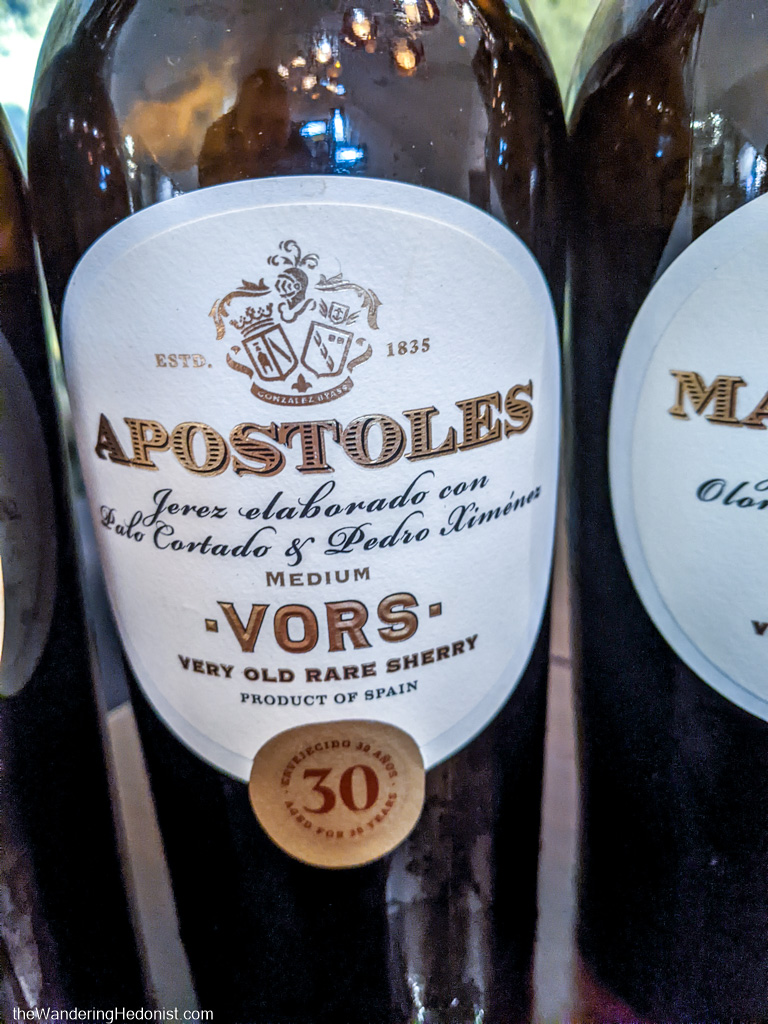

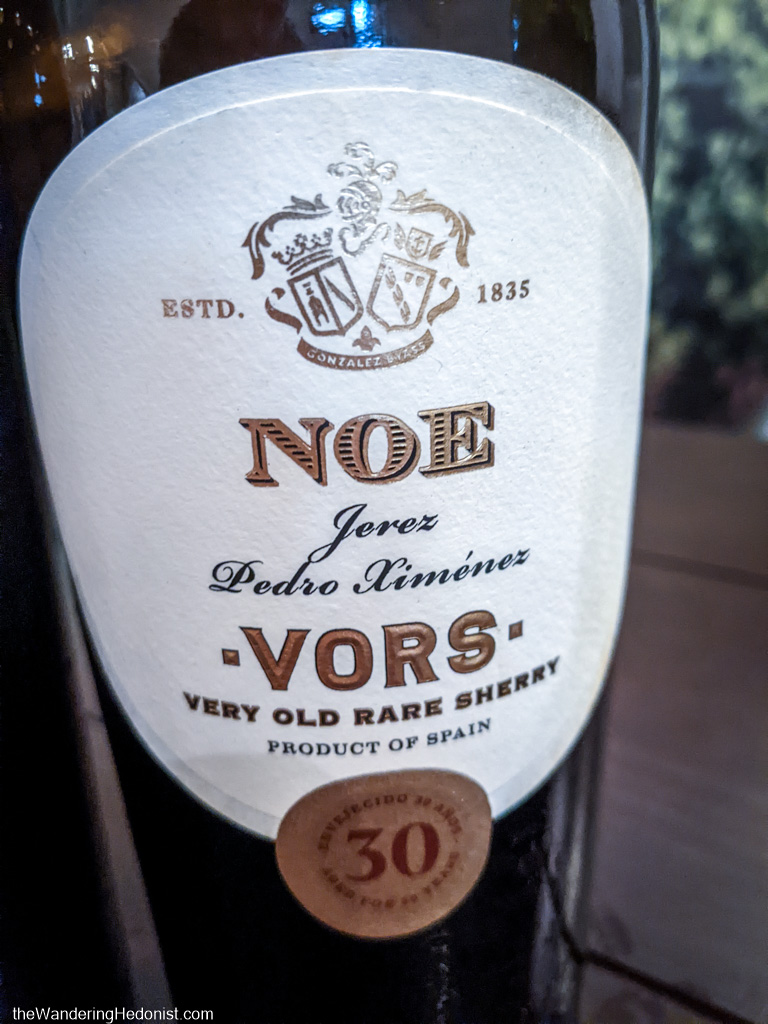
Bodegas Tradición
After trying a few VOR/VORS sherries, we asked around about where to try more and everyone pointed us to this smaller winery that specialized in this older variety.
Bodegas Tradición is a winery that was started to rekindle a multigenerational winemaking tradition that was lost. They tend to purchase casks of existing wine and continue to age them, bottling them under their own VOR/VORS labels with great success. In addition to the aging room the winery has a world class art gallery that we were allowed to visit including The Capitulation of Granada by F. Padilla (1882).

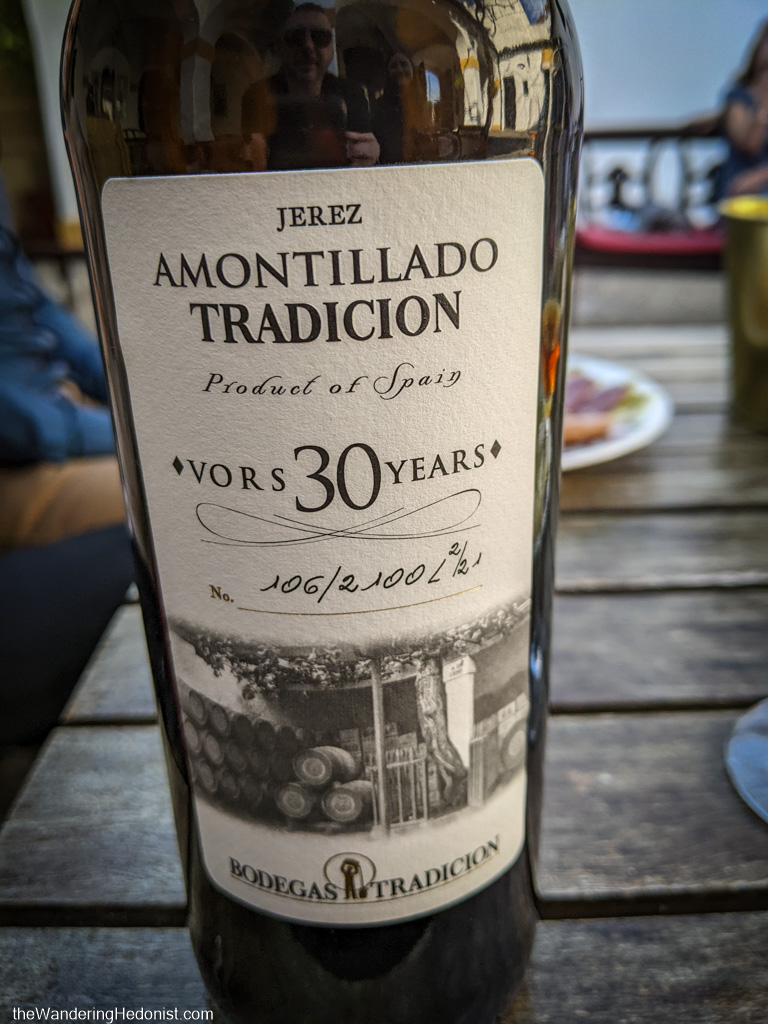
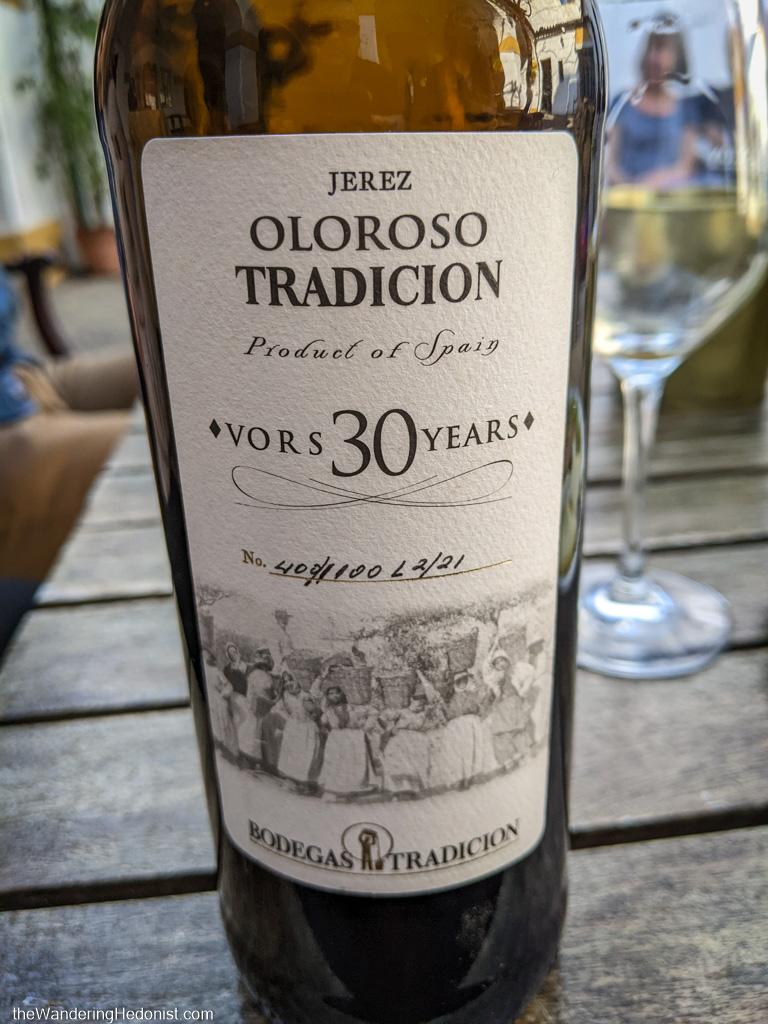
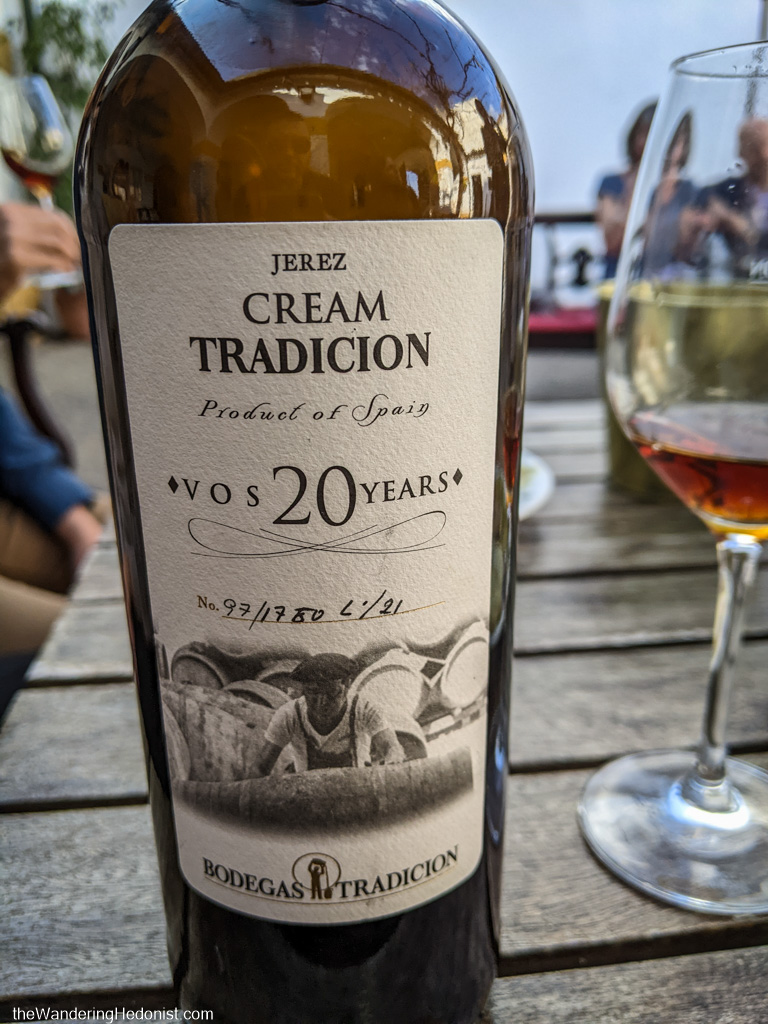

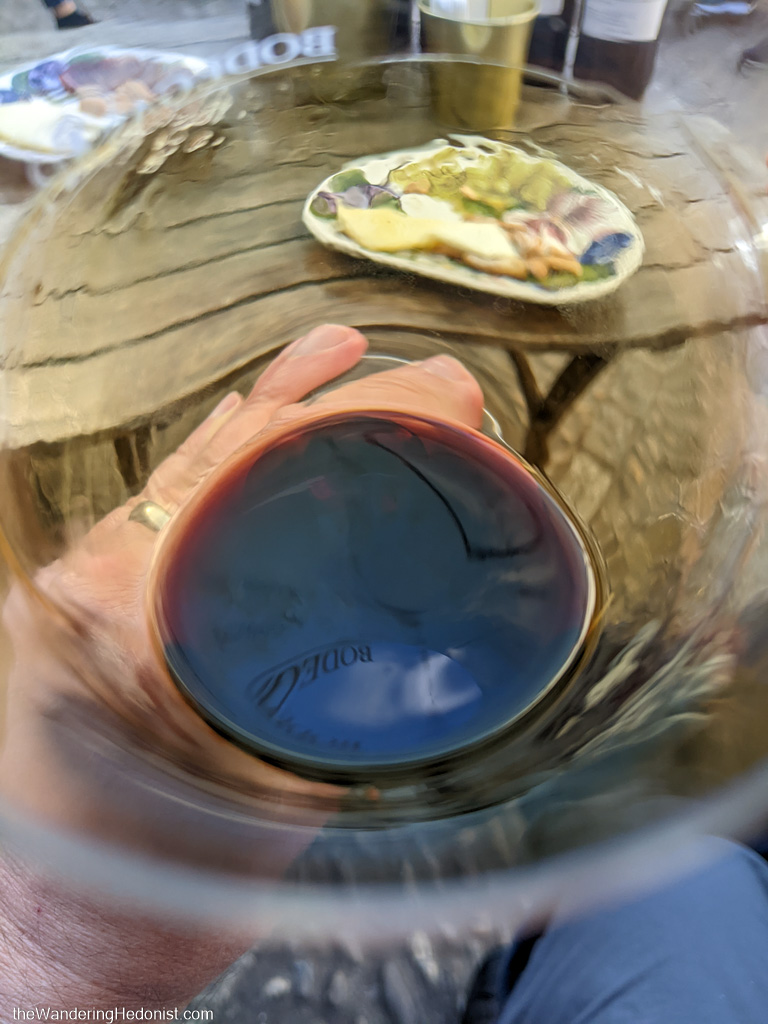
Eating out in Jerez
There is no shortage of places to eat out in Jerez, from humble tapas bars to Michelin recognized fine dining. Honestly after my Best Tapas in Seville food tour I needed a little break from eating out every night but we still manage to eat well in Jerez. Very well. And you won’t find a better place to drink sherry wine while you’re doing it.
La Carbona
Our first night in Jerez we were tired and needed a quick dinner without researching. The only name I had in my head was La Carbona, a top pick from Lonely Planet. I really didn’t know what we were in for. As a casual throw away meal we wandered into a world class restaurant with an absolutely fabulous menu. I feel a little bad for not preparing more for the meal and being able to go all in, but I’ll count myself lucky for this unbeatable a la carte experience at the best place we ate in Jerez.
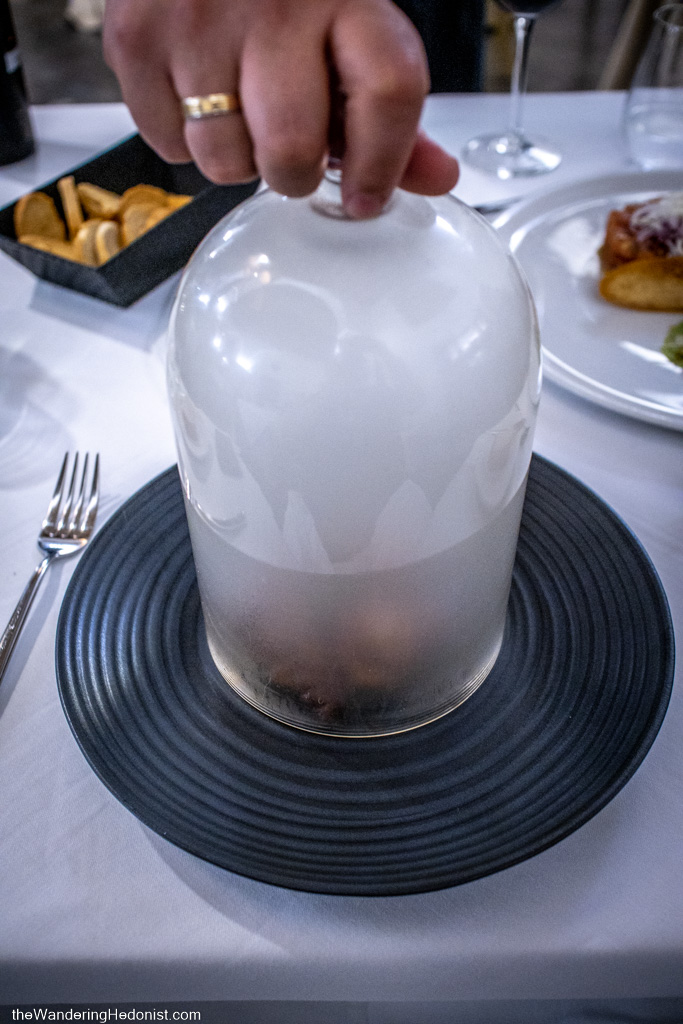
Veal sweetbreads under bell jar of smoke.

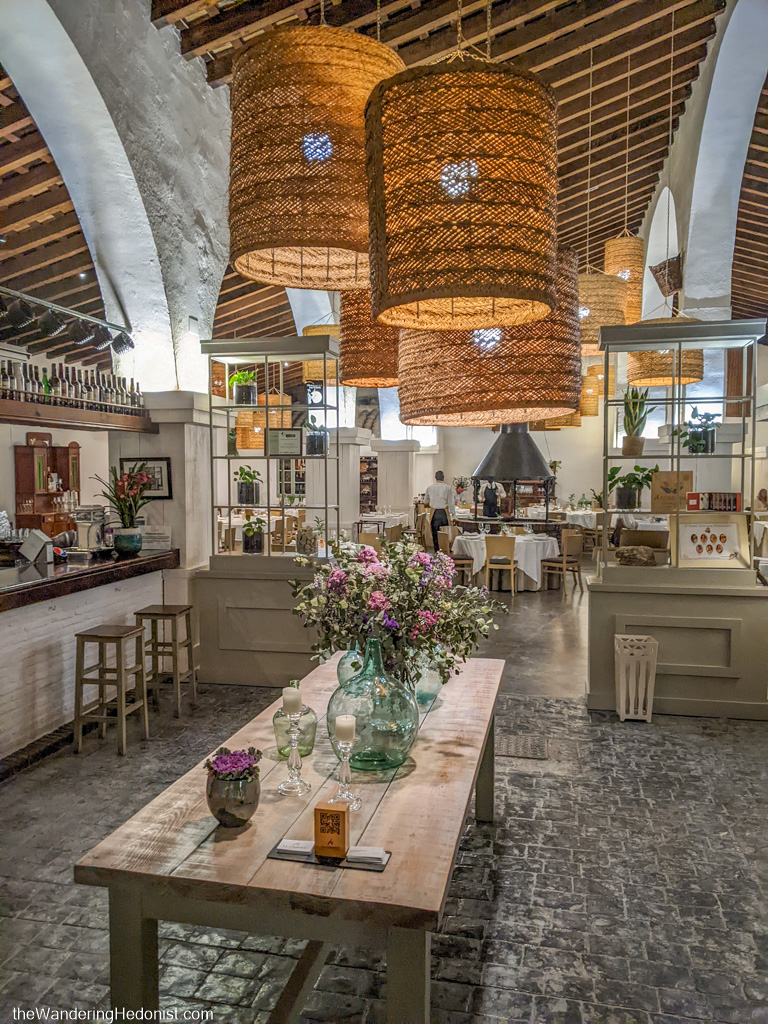
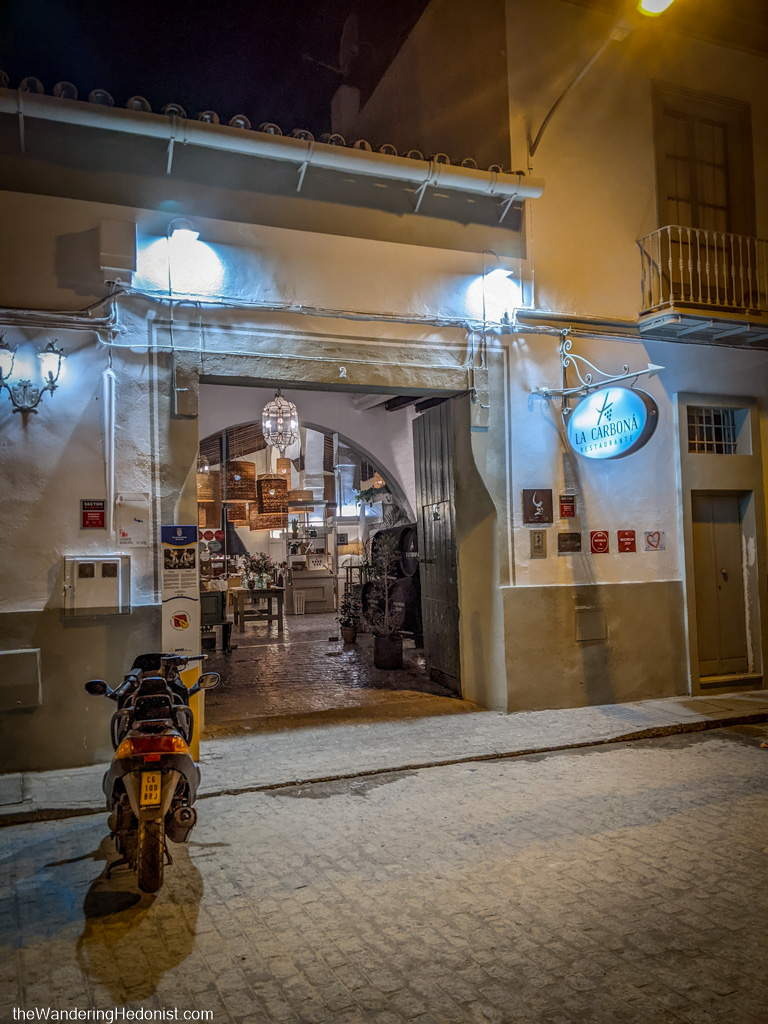
Restaurante Albores
We were looking for some place for an early dinner/late lunch after a winery tour and Albores happened to be open between the lunch and dinner hours. (Most southern Spanish towns close down between 4:30 and 8pm) This Michelin recognized restaurant was completely deserted but we didn’t mind having it all to ourselves. After a few delicious tapas we were fortified and ready to tackle the town again.
La Cruz Blanca
After having 10 glasses of incredible sherry at the Gonzalez Byass ultimate tasting, we asked what bar we should go to to try more and our guide suggested this place. Down a lively side street from the main square full of playing children and half drunk singing locals. We had a great meal and even more great sherry and probably ill-advised, three brandies and a vermouth to boot. Definitely go here to sample the local beverages.

Ensaladilla templada (Vera Cruz) huevo 62º, chicharrón de atún, camarones y mayonesa de cerveza tostada. (Warm salad (Vera Cruz) 62º egg, tuna chicharrón, shrimp and toasted beer mayonnaise)
El Trastero Tapas
This was a tiny local bar a block or so from our apartment. A lively place with a decent menu and a good sherry selection. The price per portion seemed a bit high but the food was good and it served the purpose. Unusually we refused the bread service and every dish seemed to have a saucy component perfect for sopping with bread. Oh well, lesson learned. They charged us for the bread anyway but we didn’t have the energy to refute the 2 euros.
Jindama
We ended up extending out stay in Jerez due to a covid scare (we eventually tested negative) but we had to move apartments for a few days to the other side of town to a more locals area. This place was close by and always packed with young locals. A Mexican/Spanish type of menu with lots of outdoor seating close to Bodegas Tradición. Very casual. We ate here a couple of times.
Jerez Cathedral
Right in the middle of town next to the central castle is the beautiful Jerez Cathedral built in a mix of Gothic, Baroque and Neoclassical styles. Built between 1695-1778, the cathedral features life-sized knife wielding apostles and a collection of interesting religious sculptures and dramatic altars.
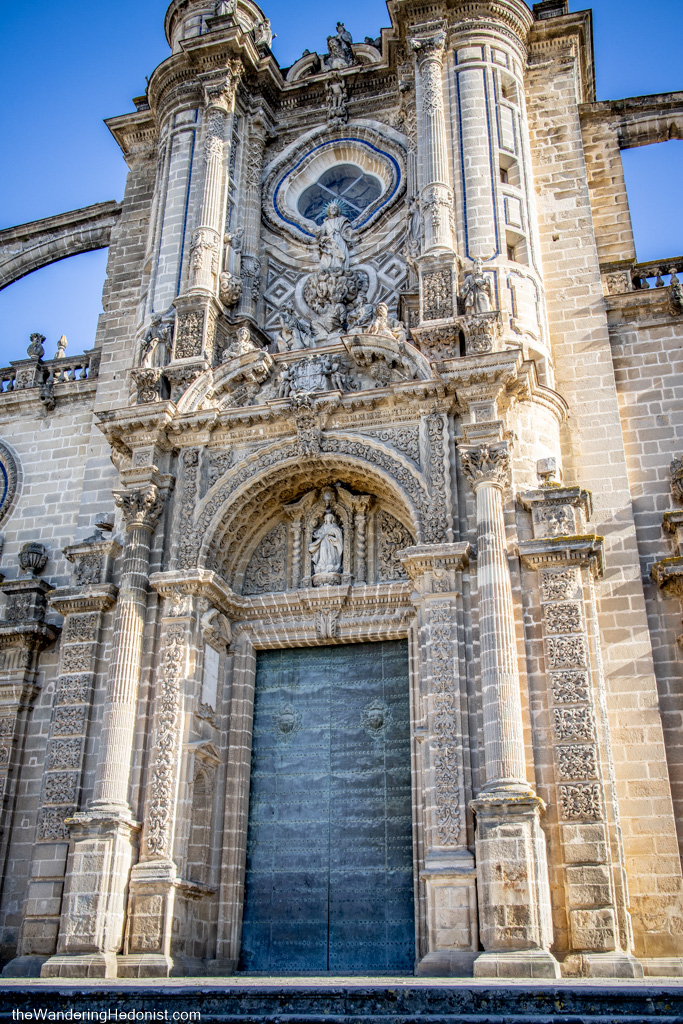



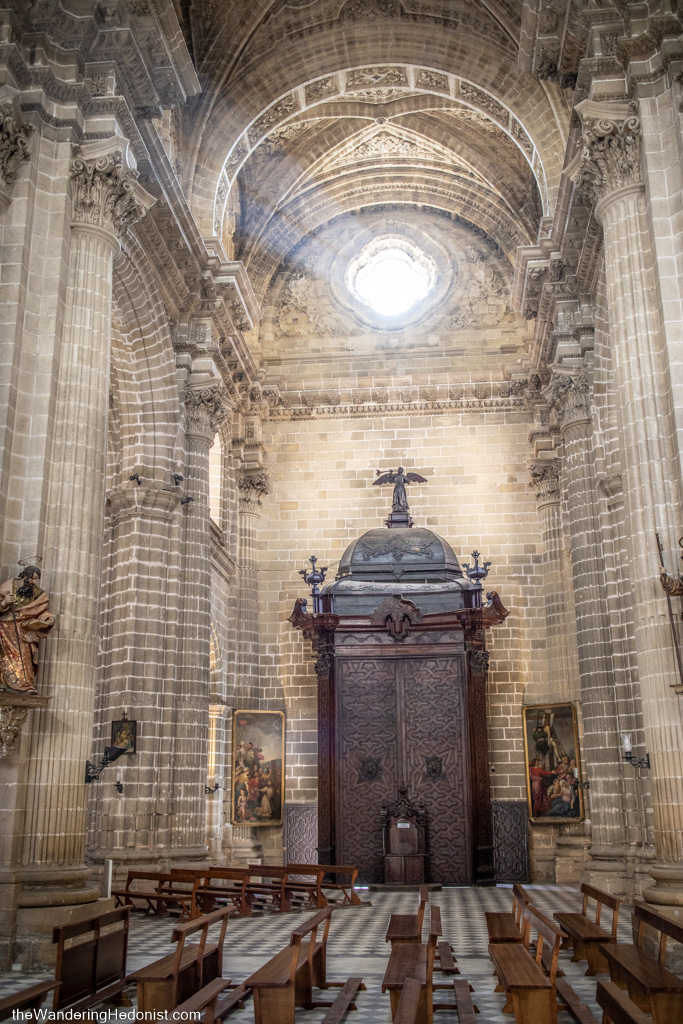






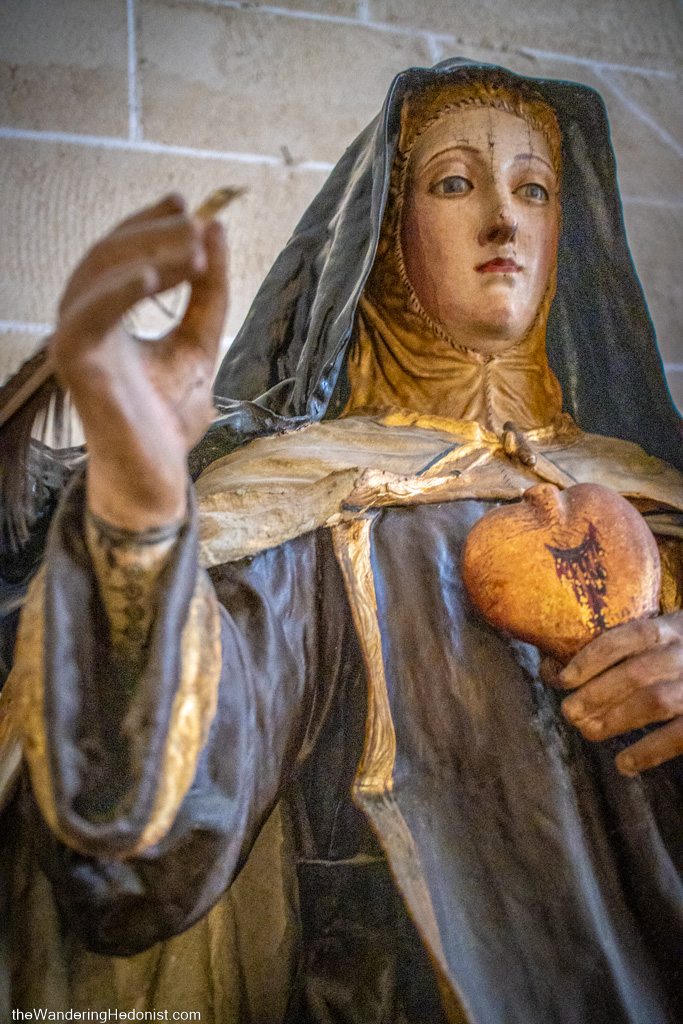



Alcázar de Jerez
This structure was built in the 11th and 12th century as a Moorish alcázar by the Almohad Caliphate and later repurposed after the Reconquista for Christian mayors. The structure contains the only remaining mosque of 18 previously built in the city, converted to a church. Palm covered squares ring the structure and it’s a great place to just hang out and chill.
Iglesia de San Miguel
This gothic church is on the opposite side of the alcázar from the cathedral and is very elaborate with a grove of orange trees in the front along a checkerboard square. Be careful though, because even though there doesn’t appear to be a road, the square is a main thoroughfare through the city. Cars just drive right through it like a road. We didn’t go inside but the outside is worth the visit on its own.


